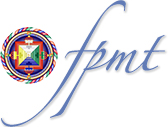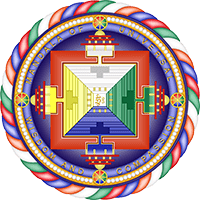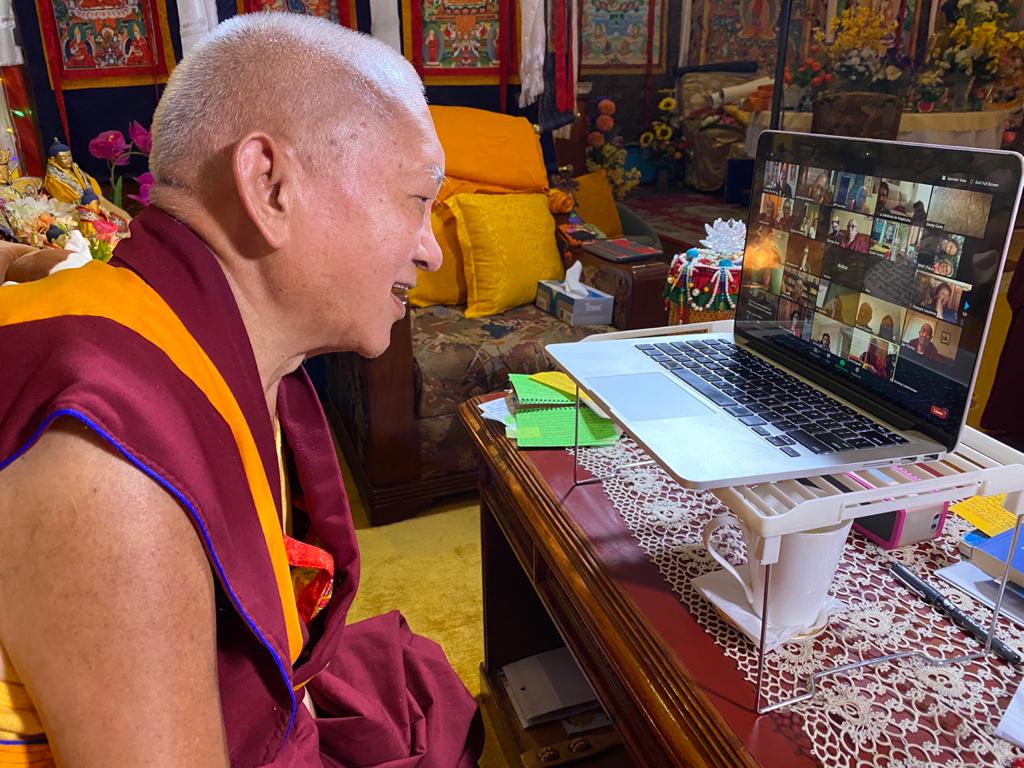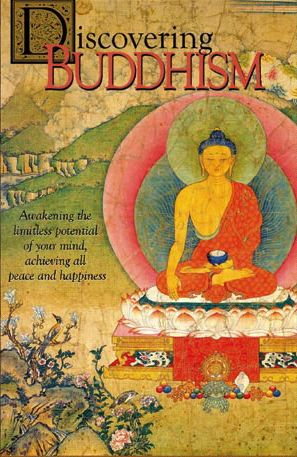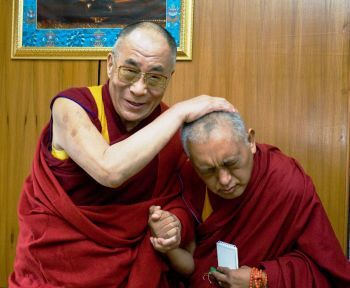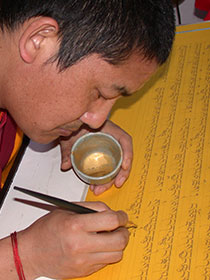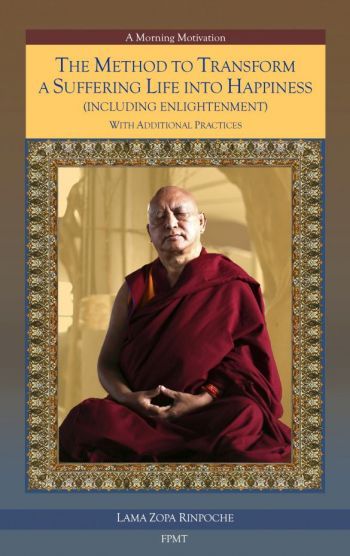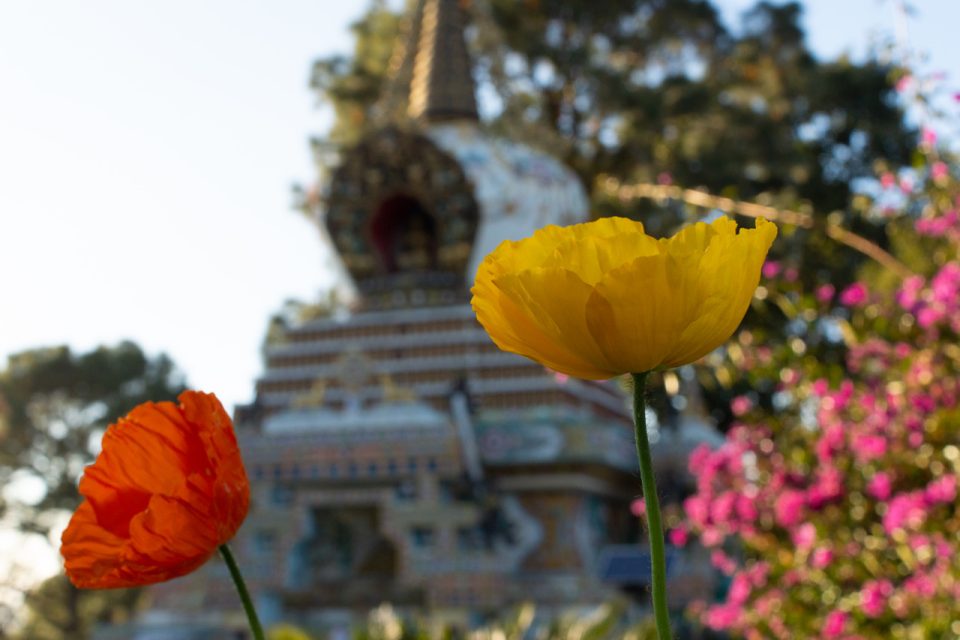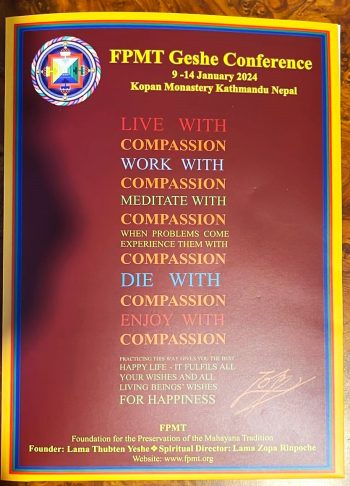- Home
- FPMT Homepage
Foundation for the Preservation of the Mahayana Tradition
The FPMT is an organization devoted to preserving and spreading Mahayana Buddhism worldwide by creating opportunities to listen, reflect, meditate, practice and actualize the unmistaken teachings of the Buddha and based on that experience spreading the Dharma to sentient beings. We provide integrated education through which people’s minds and hearts can be transformed into their highest potential for the benefit of others, inspired by an attitude of universal responsibility and service. We are committed to creating harmonious environments and helping all beings develop their full potential of infinite wisdom and compassion. Our organization is based on the Buddhist tradition of Lama Tsongkhapa of Tibet as taught to us by our founders Lama Thubten Yeshe and Lama Thubten Zopa Rinpoche.
- Willkommen
Die Stiftung zur Erhaltung der Mahayana Tradition (FPMT) ist eine Organisation, die sich weltweit für die Erhaltung und Verbreitung des Mahayana-Buddhismus einsetzt, indem sie Möglichkeiten schafft, den makellosen Lehren des Buddha zuzuhören, über sie zur reflektieren und zu meditieren und auf der Grundlage dieser Erfahrung das Dharma unter den Lebewesen zu verbreiten.
Wir bieten integrierte Schulungswege an, durch denen der Geist und das Herz der Menschen in ihr höchstes Potential verwandelt werden zum Wohl der anderen – inspiriert durch eine Haltung der universellen Verantwortung und dem Wunsch zu dienen. Wir haben uns verpflichtet, harmonische Umgebungen zu schaffen und allen Wesen zu helfen, ihr volles Potenzial unendlicher Weisheit und grenzenlosen Mitgefühls zu verwirklichen.
Unsere Organisation basiert auf der buddhistischen Tradition von Lama Tsongkhapa von Tibet, so wie sie uns von unseren Gründern Lama Thubten Yeshe und Lama Thubten Zopa Rinpoche gelehrt wird.
- Bienvenidos
La Fundación para la preservación de la tradición Mahayana (FPMT) es una organización que se dedica a preservar y difundir el budismo Mahayana en todo el mundo, creando oportunidades para escuchar, reflexionar, meditar, practicar y actualizar las enseñanzas inconfundibles de Buda y en base a esa experiencia difundir el Dharma a los seres.
Proporcionamos una educación integrada a través de la cual las mentes y los corazones de las personas se pueden transformar en su mayor potencial para el beneficio de los demás, inspirados por una actitud de responsabilidad y servicio universales. Estamos comprometidos a crear ambientes armoniosos y ayudar a todos los seres a desarrollar todo su potencial de infinita sabiduría y compasión.
Nuestra organización se basa en la tradición budista de Lama Tsongkhapa del Tíbet como nos lo enseñaron nuestros fundadores Lama Thubten Yeshe y Lama Zopa Rinpoche.
A continuación puede ver una lista de los centros y sus páginas web en su lengua preferida.
- Bienvenue
L’organisation de la FPMT a pour vocation la préservation et la diffusion du bouddhisme du mahayana dans le monde entier. Elle offre l’opportunité d’écouter, de réfléchir, de méditer, de pratiquer et de réaliser les enseignements excellents du Bouddha, pour ensuite transmettre le Dharma à tous les êtres. Nous proposons une formation intégrée grâce à laquelle le cœur et l’esprit de chacun peuvent accomplir leur potentiel le plus élevé pour le bien d’autrui, inspirés par le sens du service et une responsabilité universelle. Nous nous engageons à créer un environnement harmonieux et à aider tous les êtres à épanouir leur potentiel illimité de compassion et de sagesse. Notre organisation s’appuie sur la tradition guéloukpa de Lama Tsongkhapa du Tibet, telle qu’elle a été enseignée par nos fondateurs Lama Thoubtèn Yéshé et Lama Zopa Rinpoché.
Visitez le site de notre Editions Mahayana pour les traductions, conseils et nouvelles du Bureau international en français.
Voici une liste de centres et de leurs sites dans votre langue préférée
- Benvenuto
L’FPMT è un organizzazione il cui scopo è preservare e diffondere il Buddhismo Mahayana nel mondo, creando occasioni di ascolto, riflessione, meditazione e pratica dei perfetti insegnamenti del Buddha, al fine di attualizzare e diffondere il Dharma fra tutti gli esseri senzienti.
Offriamo un’educazione integrata, che può trasformare la mente e i cuori delle persone nel loro massimo potenziale, per il beneficio di tutti gli esseri, ispirati da un’attitudine di responsabilità universale e di servizio.
Il nostro obiettivo è quello di creare contesti armoniosi e aiutare tutti gli esseri a sviluppare in modo completo le proprie potenzialità di infinita saggezza e compassione.
La nostra organizzazione si basa sulla tradizione buddhista di Lama Tsongkhapa del Tibet, così come ci è stata insegnata dai nostri fondatori Lama Thubten Yeshe e Lama Zopa Rinpoche.
Di seguito potete trovare un elenco dei centri e dei loro siti nella lingua da voi prescelta.
- 欢迎 / 歡迎
简体中文
“护持大乘法脉基金会”( 英文简称:FPMT。全名:Foundation for the Preservation of the Mahayana Tradition) 是一个致力于护持和弘扬大乘佛法的国际佛教组织。我们提供听闻,思维,禅修,修行和实证佛陀无误教法的机会,以便让一切众生都能够享受佛法的指引和滋润。
我们全力创造和谐融洽的环境, 为人们提供解行并重的完整佛法教育,以便启发内在的环宇悲心及责任心,并开发内心所蕴藏的巨大潜能 — 无限的智慧与悲心 — 以便利益和服务一切有情。
FPMT的创办人是图腾耶喜喇嘛和喇嘛梭巴仁波切。我们所修习的是由两位上师所教导的,西藏喀巴大师的佛法传承。
繁體中文
護持大乘法脈基金會”( 英文簡稱:FPMT。全名:Found
ation for the Preservation of the Mahayana Tradition ) 是一個致力於護持和弘揚大乘佛法的國際佛教組織。我們提供聽聞, 思維,禪修,修行和實證佛陀無誤教法的機會,以便讓一切眾生都能 夠享受佛法的指引和滋潤。 我們全力創造和諧融洽的環境,
為人們提供解行並重的完整佛法教育,以便啟發內在的環宇悲心及責 任心,並開發內心所蘊藏的巨大潛能 — 無限的智慧與悲心 – – 以便利益和服務一切有情。 FPMT的創辦人是圖騰耶喜喇嘛和喇嘛梭巴仁波切。
我們所修習的是由兩位上師所教導的,西藏喀巴大師的佛法傳承。 察看道场信息:
- FPMT Homepage
- News/Media
-
- Study & Practice
-
-
- About FPMT Education Services
- Latest News
- Programs
- New to Buddhism?
- Buddhist Mind Science: Activating Your Potential
- Heart Advice for Death and Dying
- Discovering Buddhism
- Living in the Path
- Exploring Buddhism
- FPMT Basic Program
- FPMT Masters Program
- FPMT In-Depth Meditation Training
- Maitripa College
- Lotsawa Rinchen Zangpo Translator Program
- Universal Education for Compassion & Wisdom
- Online Learning Center
-
- Prayers & Practice Materials
- Overview of Prayers & Practices
- Full Catalogue of Prayers & Practice Materials
- Explore Popular Topics
- Benefiting Animals
- Chenrezig Resources
- Death & Dying Resources
- Lama Chopa (Guru Puja)
- Lama Zopa Rinpoche: Compendium of Precious Instructions
- Lama Zopa Rinpoche: Life Practice Advice
- Lama Zopa Rinpoche Practice Series
- Lamrim Resources
- Mantras
- Prayer Book Updates
- Purification Practices
- Sutras
- Thought Transformation (Lojong)
- Audio Materials
- Dharma Dates - Tibetan Calendar
- Translation Services
- Publishing Services
- Ways to Offer Support
- Prayers & Practice Materials
-
- Teachings and Advice
- Find Teachings and Advice
- Lama Zopa Rinpoche Advice Page
- Lama Zopa Rinpoche: Compendium of Precious Instructions
- Lama Zopa Rinpoche Video Teachings
- ༧སྐྱབས་རྗེ་བཟོད་པ་རིན་པོ་ཆེ་མཆོག་ནས་སྩལ་བའི་བཀའ་སློབ་བརྙན་འཕྲིན།
- Podcasts
- Lama Yeshe Wisdom Archive
- Buddhism FAQ
- Dharma for Young People
- Resources on Holy Objects
- Teachings and Advice
-
-
*If a menu item has a submenu clicking once will expand the menu clicking twice will open the page.
-
-
- Centers
-
- Teachers
-
- Projects
-
-
-
-
*If a menu item has a submenu clicking once will expand the menu clicking twice will open the page.
-
-
- FPMT
-
-
-
-
-
Unlike an external enemy, the inner enemy cannot regroup and launch a comeback once it has been destroyed from within.
His Holiness the Dalai Lama
-
-
-
- Shop
-
-
-
The Foundation Store is FPMT’s online shop and features a vast selection of Buddhist study and practice materials written or recommended by our lineage gurus. These items include homestudy programs, prayers and practices in PDF or eBook format, materials for children, and other resources to support practitioners.
Items displayed in the shop are made available for Dharma practice and educational purposes, and never for the purpose of profiting from their sale. Please read FPMT Foundation Store Policy Regarding Dharma Items for more information.
-
-
FPMT Community: Stories & News
21
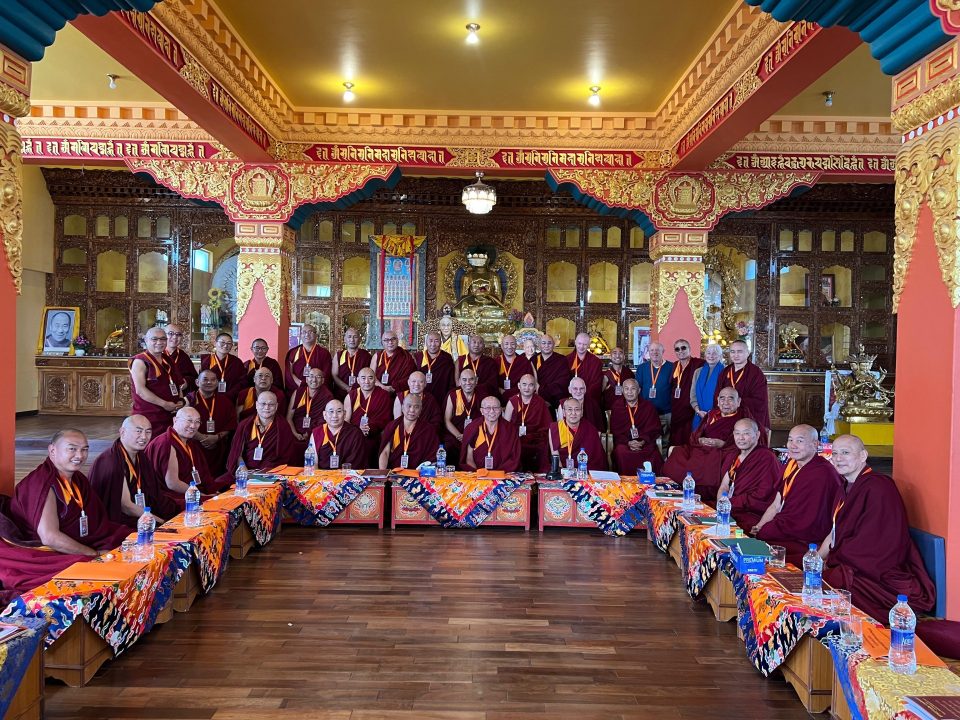
Participants in the 2024 FPMT Geshe Conference at Kopan Monastery.
The new year began with an extremely important conference for FPMT geshes at Kopan Monastery from January 9-14, 2024. More than thirty geshes and geshemas plus five FPMT Inc. board members spent three days together engaged in a rich schedule of discussing, learning, and planning. They also used this opportunity to engage in prayers for Lama Zopa Rinpoche’s swift return, offer an all-day Most Secret Hayagriva Tsok Kong, and engage in a two-day pilgrimage.
Ven. Roger Kunsang commented that the event went very well with a great response from those in attendance. He reported that it was an open and easy going meeting, and participants expressed a sense of inclusiveness in the future of FPMT, of which they are all an essential part.
Ven. Thubten Pemba, FPMT Inc. board member and resident teacher of Cham Tse Ling Centre in Hong Kong, served as one of the facilitators for the conference and offered some insight into the event:
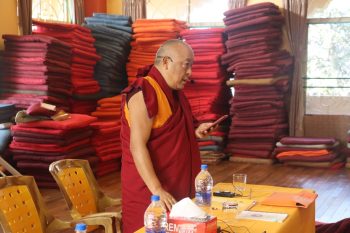
Ven. Thubten Pemba, FPMT Inc. board member and one of the Geshe Conference facilitators, speaking at the Geshe Conference.
The venerable geshelas, geshemas, and FPMT Inc. board member participants all said they had a great time and they all expressed great joy with what Lama Yeshe called the, “family feeling” of unity of being together and especially being at Kopan.
There is a great need to bring all or most of the great geshes together from time to time as normally there is no opportunity for all the geshes teaching in the FPMT organization to come together and this gives them a valued opportunity to share their own personal experiences of teaching in different cultures and countries of different time zones.
The conversation and fun they each had during the meal times and break times, the jokes they throw at each other, the genuine laughter, the joy and happiness of being under one roof, the great respect for each other, the harmonious atmosphere and most precious advice from H.H. Gaden Tri Rinpoche and H.E. Ling Rinpoche by Zoom all helped make this function be most meaningful and worthwhile. Not surprisingly, many geshes personally expressed the need to hold such a meeting more frequently.
Participant Geshe Tenzin Loden, resident geshe at Institut Vajra Yogini, France, offered the following feedback on the conference:
The conference went really well, I feel confident now that all the centers will be able to work together in the future and we could see that they are all are happy to follow Lama Zopa Rinpoche’s advice. Usually the geshes focus mainly on teaching so it was good this time to have space to discuss other aspects regarding centers and the FPMT. Going forward, it is important that the geshes, the directors, the SPCs, and the translators really work together. And I think it is important to have these meetings regularly. It was important to have this space to do prayers together, for the FPMT, for the centers and for the swift return of Lama Zopa Rinpoche.
An Overview of the Proceedings
Day One
On the first day of the conference, January 9, Khen Rinpoche Geshe Chonyi offered a welcome speech and introduction to the conference. Each geshe then shared a bit about their stories and how they came to their particular FPMT center.
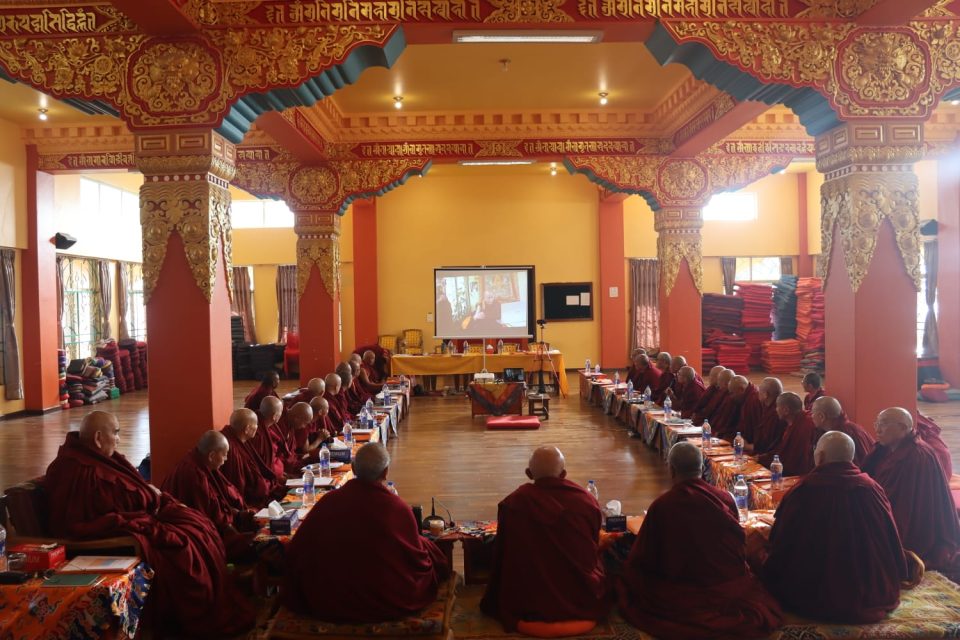
FPMT Geshe Conference participants listening to Ganden Tri Rinpoche offer advice via Zoom.
Ganden Tri Rinpoche connected to the meeting via Zoom and was asked to offer some advice. In general, the advice was for the participants to share their experiences at each Dharma center and their plans for the future, and he requested each geshe to speak openly and honestly about their work and experiences, even the difficulties. Ganden Tri Rinpoche offered advice regarding what should be taught at the center, and to encourage the students to study well and read. He also praised the monks and nuns of Kopan and said they are doing an excellent job. “These activities show that the purposes for which Kopan was established have been accomplished and are truly a basis for purifying obscurations and keeping pure morality. I’m very pleased because this benefits the whole region,” Ganden Tri Rinpoche shared. “It’s very good.” Link to full transcript of this talk.
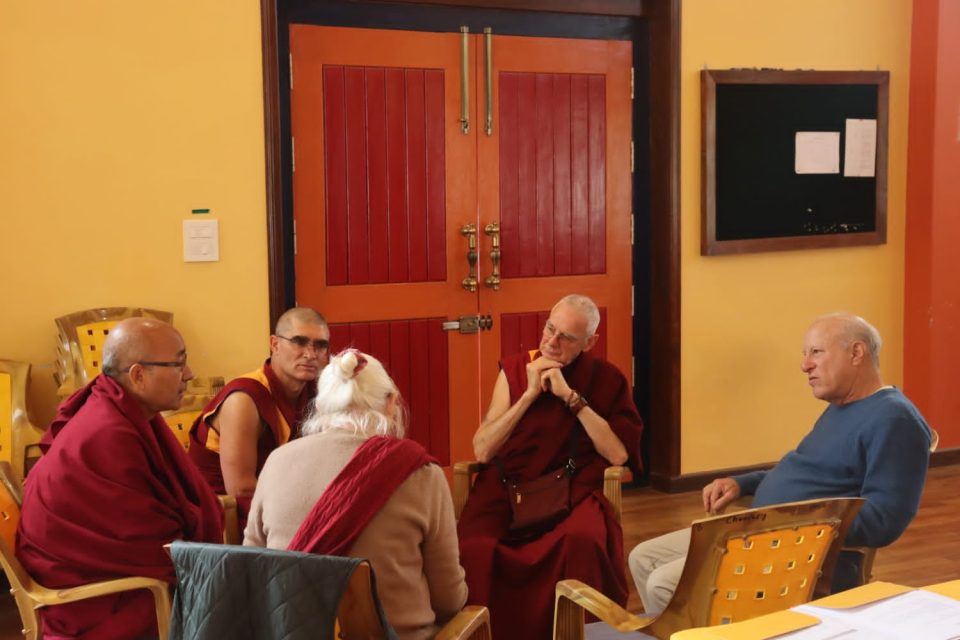
FPMT Inc. board members joining small discussion groups during the FPMT Geshe Conference.
Ven. Roger Kunsang introduced the FPMT organization, its activities and mission, and discussed Rinpoche’s inspiring style of leading the organization, and Rinpoche wishes for FPMT:
“So then, I think Rinpoche’s way of taking responsibility for the organization was, Rinpoche went on the road to teach. So I think that was Rinpoche’s way of leading the organization through teaching, through inspiration, because of his practice, etc., etc. His leadership was in the form of writing, teaching, and inspiration. So for the next, next 36 years, I think Rinpoche was on the road non-stop. I mean literally he didn’t stop, seven days a week, and it wasn’t just the days, it was the nights also. So I never experienced anything like that before in my life.
“And not only that, but I think Rinpoche never took his robes off. Every two weeks you had to push Rinpoche to take a shower; that was the time he took his robes off. So otherwise, he would be either teaching or sitting on his bed reading texts. He always had texts everywhere around him, the luggage was two or three suitcases full of texts.
“We always had trouble at the airport when we had to weigh in suitcases. Rinpoche wouldn’t give up one text, he would take off his robes first, but he refused to give up the texts. I remember we sometimes had to pay two, three thousand dollars excess baggage, but he still wouldn’t give up the texts.
“So that was Rinpoche’s style, and I think that’s how he led the organization. It was through his teachings, and through the inspiration that he gave to everyone.” Read Ven. Roger’s full talk.
FPMT Inc. board member Dale Davis offered some updates from the board.
The geshes all then started conversations which lasted into the second day about their experiences within the FPMT organization and discussed the challenges they face in their positions, what ideas they have for the future, how they are coping with the loss of Rinpoche, and many other topics.
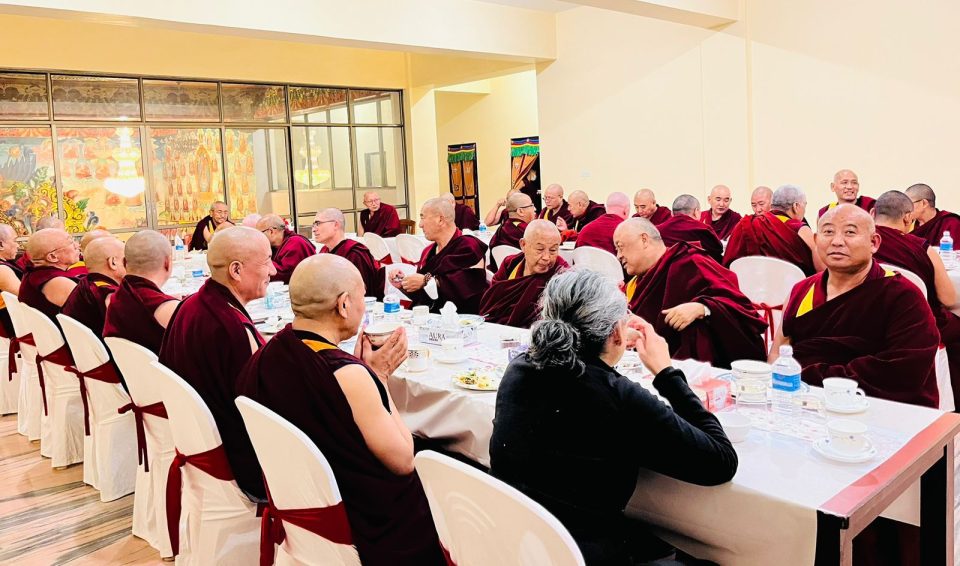
Participants in the FPMT Geshe Conference having a meal together at Kopan Nunnery. Photos courtesy of Ven. Losang Chotrin and Ven. Losang Chozin.
Day Two
On the second day of the conference, January 10, participants continued their conversations from the day prior and also discussed successes, weaknesses, opportunities, and threats within the FPMT organization from their perspectives. Prior to that, H.E. Ling Rinpoche addressed the geshes through Zoom in a very inspiring talk that we encourage you to read in full His Eminence shared a moving account of the accomplishments of Lama Yeshe and Lama Zopa Rinpoche:
“Where the teachings had not spread before, they newly spread them, and where they had declined, they restored them. There are over one-hundred FPMT centers now. And these were all founded not with a worldly intention to make a profit or something; rather they were all developed with a pure wish to benefit transmigratory sentient beings. Since they were developed with such a vast intention, they are incredibly beneficial to the Buddha’s teachings. Much benefit has come about.”
H.E. also emphasized how “extremely important for all the geshes to meet together. There is nothing more important at this time than to support the FPMT. It was predicted that the Buddha’s teachings will remain for 5,000 years in this world. Now 2,500 years have passed so it is possible that the teachings will remain for another 2,500 years. But for the teachings of both scripture and realization to remain depends on making effort in both scholarship and practice. For this purpose, it is important for the spiritual teachers giving teachings, and especially all the geshes who are still alive, to continue today to make efforts as they have so well in the past until now. It is important for those who’ve gathered for this meeting to share their intentions to accomplish the holy wishes of His Holiness the Dalai Lama and especially the intentions of the respected Lama Zopa Rinpoche as you all have been long acquainted with Rinpoche’s wishes.”
H.E. also insisted that it is important to make extensive prayers to find the true reincarnation of Rinpoche quickly, that Rinpoche’s activities can be continued, and that all the aims of the FPMT organization to benefit sentient beings in a vast way through the various centers are successful. H.E expressed that he will pray that the FPMT will develop even more than before. Link to full transcript of this talk.
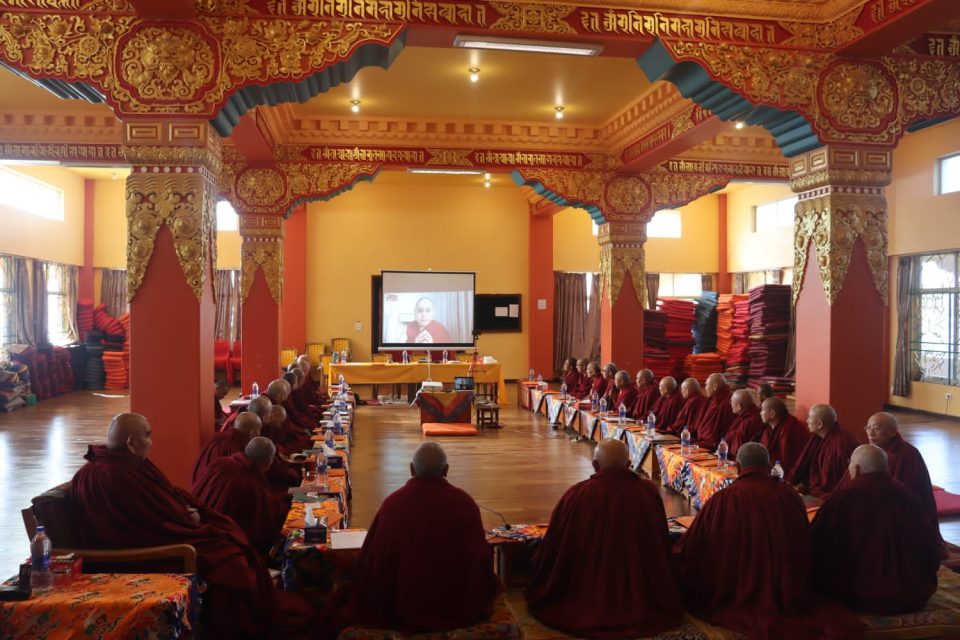
FPMT Geshe Conference participants listening to H.E. Ling Rinpoche’s advice over Zoom.
Day Three
On the third day of the conference, January 11, participants talked more about the FPMT organization and what it offers to all beings. It was recognized that if the FPMT is a reference point for authentic Buddhism, it is thanks to the work of the geshes in the centers.
FPMT Inc. board member, Karuna Cayton, shared the board’s current plans and ideas for the future of the FPMT organization.
International Office’s COO Francois Lecointre presented an overview of FPMT’s Education programs and the needs, successes, and challenges in this area.
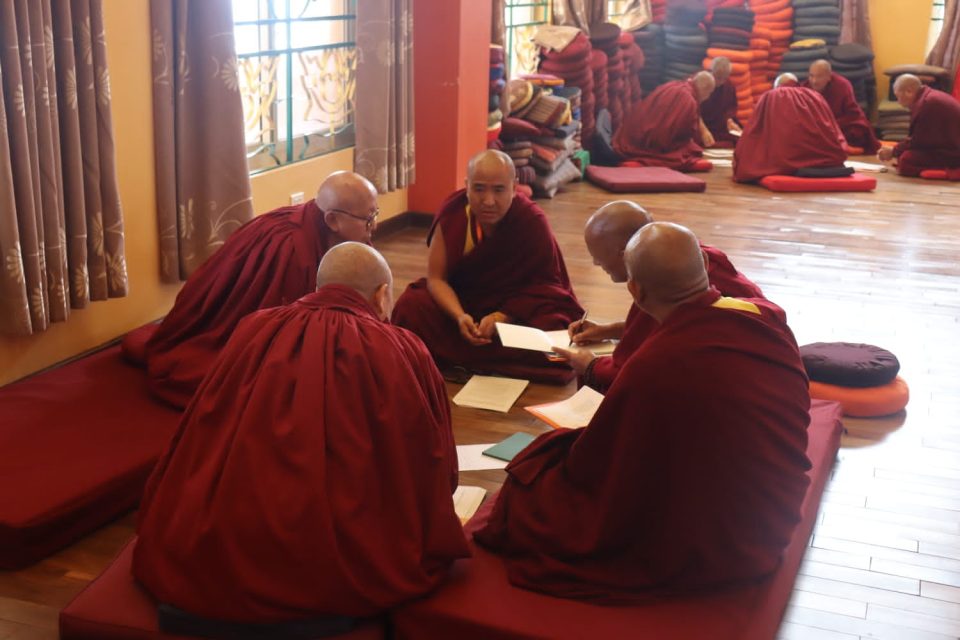
FPMT geshes breaking out into small groups to discuss and share.
On the last session of day three, swift return prayers for Lama Zopa Rinpoche, as well as the lamrim dedication prayers, were chanted by all. Ven Pemba recounted, “I really felt Lama Zopa Rinpoche was there with us for this was it was a great offering to Rinpoche. I felt Rinpoche must be very pleased with this gathering of geshes discussing how to carry forward Lama Yeshe and Rinpoche’s lineage and legacy into the future. I earnestly felt that Rinpoche’s holy mind was always guiding us and blessing us throughout the conferences.”
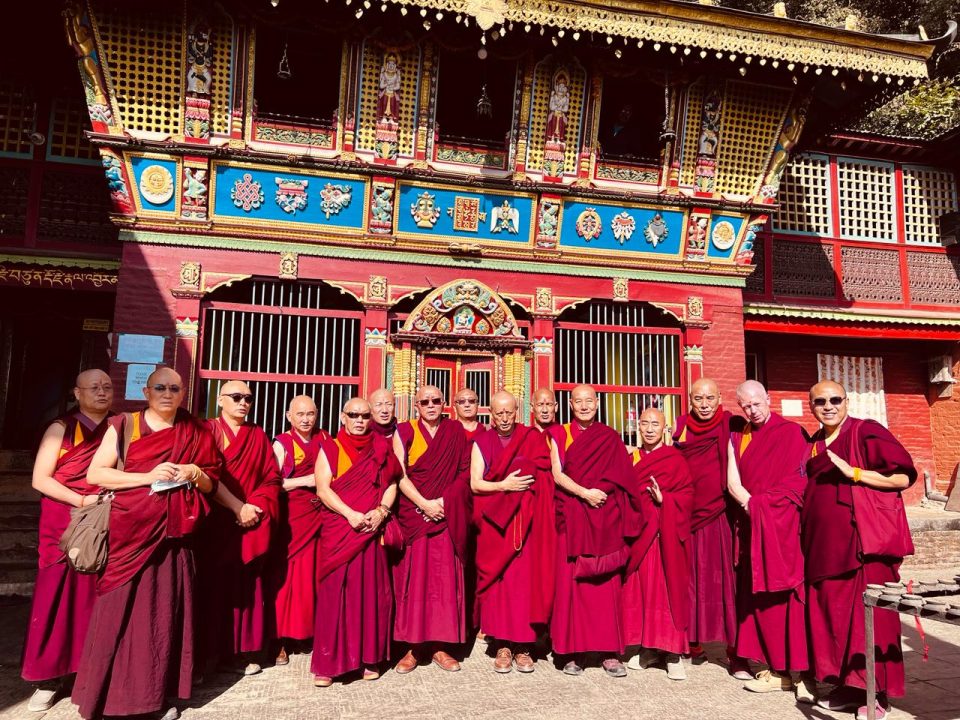
FPMT Geshe Conference participants on pilgrimage outside the Vajra Yogini Temple at Pharping. Photo by Geshe Lobsang Tengyur
Puja and Pilgrimage
The conference was followed on the next day by a very powerful Most Secret Hayagriva Tsok Kong puja dedicated in particular to all involved in FPMT, centers, teachers, staff, students, etc. This puja was joined by other monks and lama gyupas who hadn’t participated in the conference.
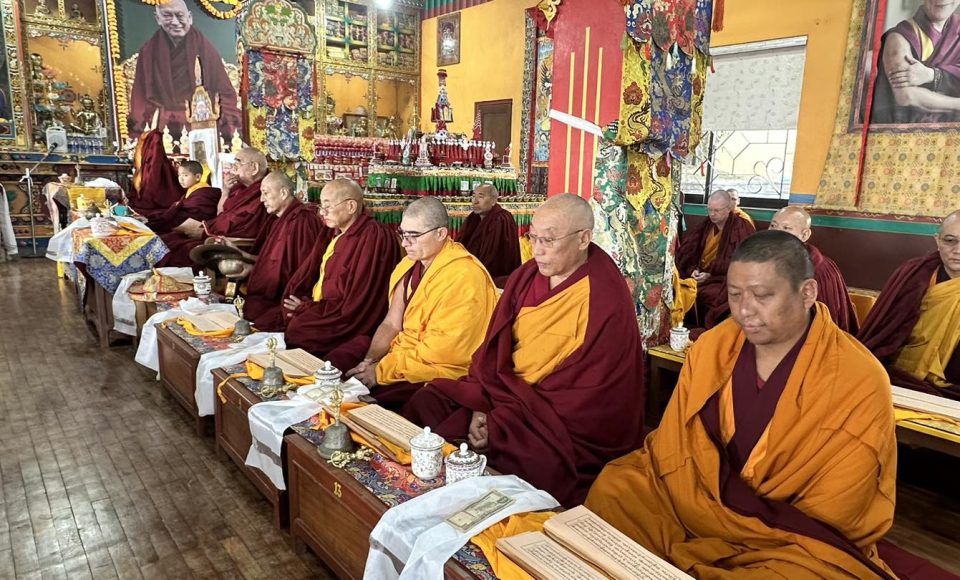
Hayagriva puja offered by Geshe Conference participants and Kopan Sangha. Photo courtesy of Kopan Monastery.
Thanks to the organizers in Kopan, the geshes were then able during the next two days to go on a pilgrimage of several of the holy sites of the Kathmandu Valley, praying in each holy place for Lama Zopa Rinpoche’s swift return, among other prayers.
When asked if Ven. Pemba had anything else to share about the Geshe Conference, or the FPMT organization in general, he said:
“FPMT students should rejoice and be grateful to our guru, founder, and remember Lama Yeshe’s and Lama Zopa Rinpoche’s kindness all the time even though for some have never met the two lamas, but in the same way as we also never met Buddha, Nagarjuna, and Lama Tsogkhapa and all the lineage gurus, we have cultivated great devotion and admiration to them and their teachings.
“The entire FPMT family is very fortunate due to the two great lamas– Lama Yeshe’s and Lama Zopa Rinpoche’s vision and mission and their compassion and kindness which has provided us a great Dharma environment and centers around the world with such greatly qualified geshes from some of the greatest monastic universities of our time.
“For the organization to have over 50 great geshes teaching in the FPMT centers, monasteries, and nunneries around the world is something the students should know and rejoice about. This is not a simple and easy task at all what the two lamas have achieved for Buddha and Dharma and suffering beings during this time of degeneration.
“We, the entire FPMT family now have a great responsibility to protect, lead, and disseminate the great teaching lineage and legacy of our beloved guru founders together with one aim and purpose. As Rinpoche used to advise us: the very purpose of the organization and purpose of our life is to free all mother sentient beings from all the suffering and lead them to Buddhahood and for that the organization has to exist entirely due to compassion and devotions.
“I make a humble request to the FPMT family: Please pray and dedicate for Rinpoche’s true and unmistaken reincarnation to return as quickly as possible in a place where the reincarnation can be very quickly recognized. Please pray that the reincarnation can complete all the studies as soon as possible and resume carrying out the legacy of Rinpoche’s past life and therefore be of the most benefit to sentient beings. May this reincarnation be able to offer extensive benefit to the world and each one of us with Dharma practice and teaching in the same way as the past life inspired us. May the teachings of Buddha and all the other holy activities of Rinpoche’s organization become of the greatest benefit to all mother sentient beings.”
A tremendously heartfelt offering of thanks to Kopan Monastery, its managers, and staff members for their generosity and wholehearted support in every step of the way from receiving guests at the airport, to taking them back to airport after the seven days of full activities, plus many other acts of kindness and service to all in attendance of this important conference. Thanks also to Karen Molina’s report of the conference, which was consulted for this report.
Foundation for the Preservation of Mahayana Tradition (FPMT), is a Tibetan Buddhist organization dedicated to the transmission of the Mahayana Buddhist tradition and values worldwide through teaching, meditation and community service.
19
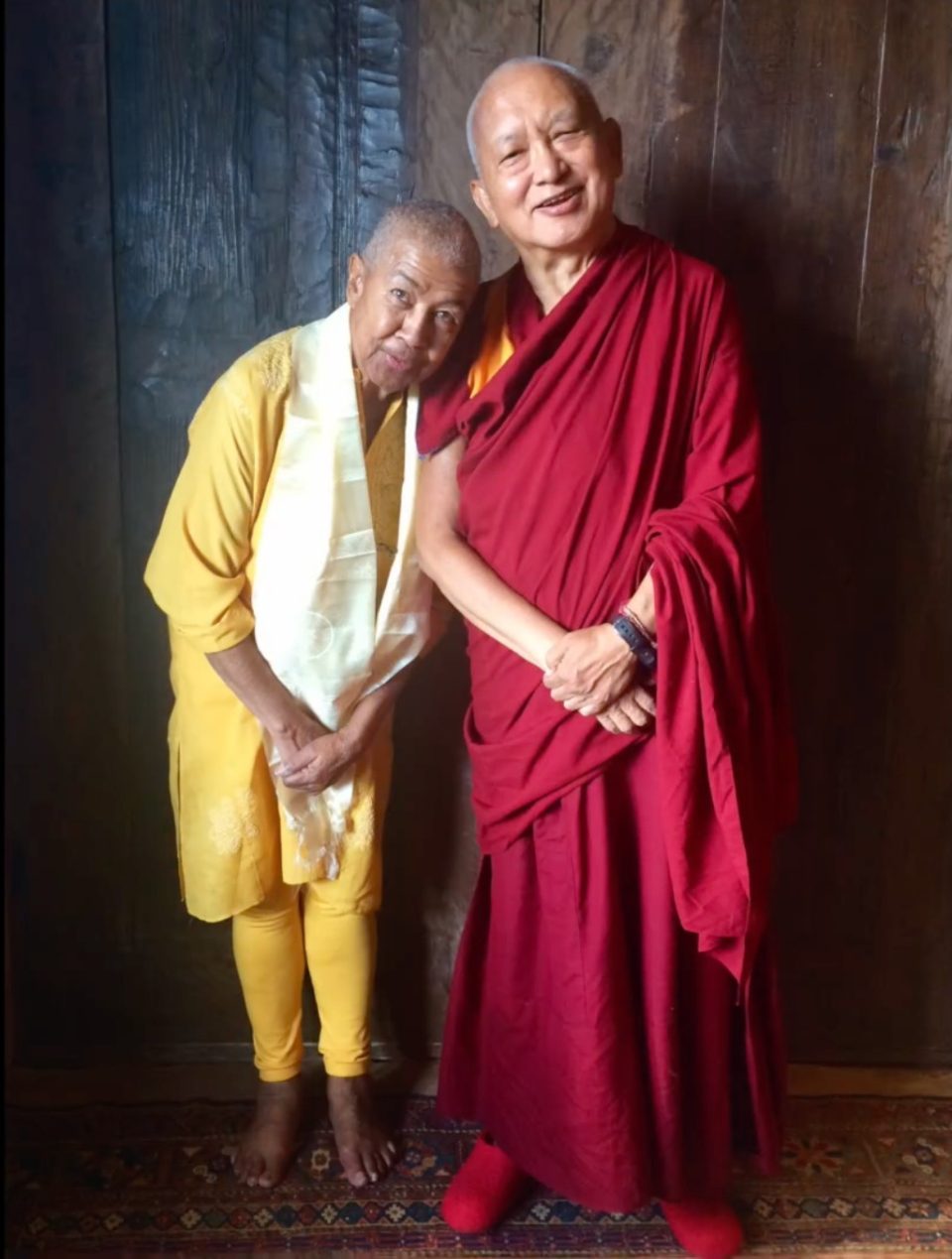
Mummy Max Mathews with Lama Zopa Rinpoche. Photo by Steve Nadeau, courtesy of the Lama Yeshe Wisdom Archive.
The entire FPMT community shares the loss of one of FPMT’s precious pioneers, “Mummy” Max Mathews (also known as Sister Max), who passed away on February 16, 2024. We also share a sense of rejoicing in the kindness and generosity she offered in her life, to which the entire FPMT organization owes immeasurable thanks.
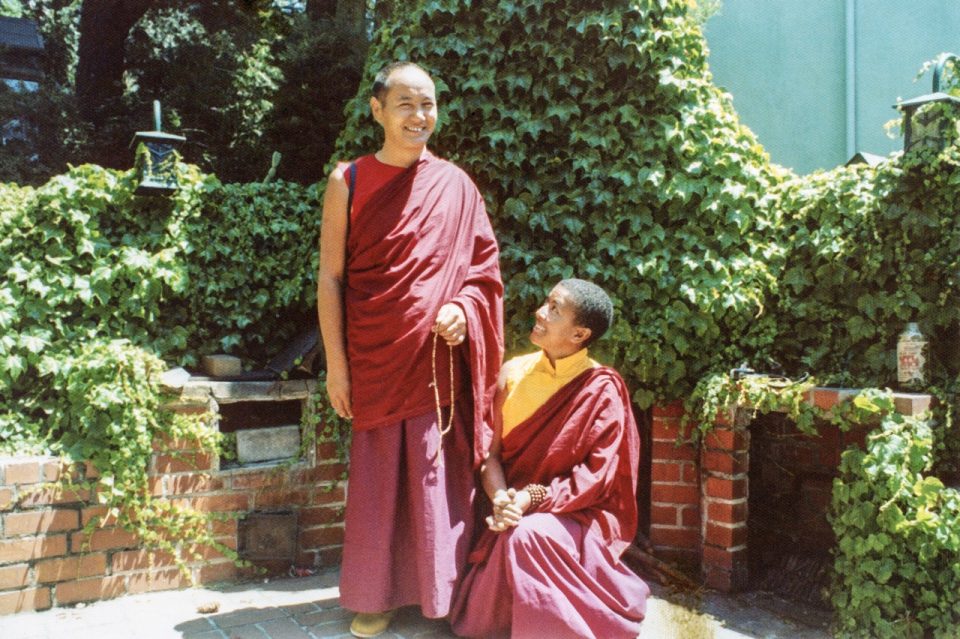
Lama Yeshe and Mummy Max in Berkeley, California, 1974. Photo courtesy of the Lama Yeshe Wisdom Archive.
Mummy Max contributed greatly and financially assisted Lama Yeshe and Lama Zopa Rinpoche in establishing Kopan Monastery and the FPMT organization.
As we put together a tribute honoring her life, we invite you to watch this interview from 2020, in which she shares spontaneous and intimate stories of her timeless relationship with Lama Yeshe and Lama Zopa Rinpoche and how she provided unconditional and essential support for the lamas’ projects as envisioned by His Holiness the Dalai Lama. This interview was filmed in July, 2020 in Santa Fe, New Mexico with images from Big Love: The Life and Teachings of Lama Yeshe.
Mummy Max explains in Volume One of Big Love: “I felt I had come home and that Lama Yeshe was my guru. He just opened me up completely. I felt balanced and whole, like I was walking on air. I also felt committed. There was no going back.”
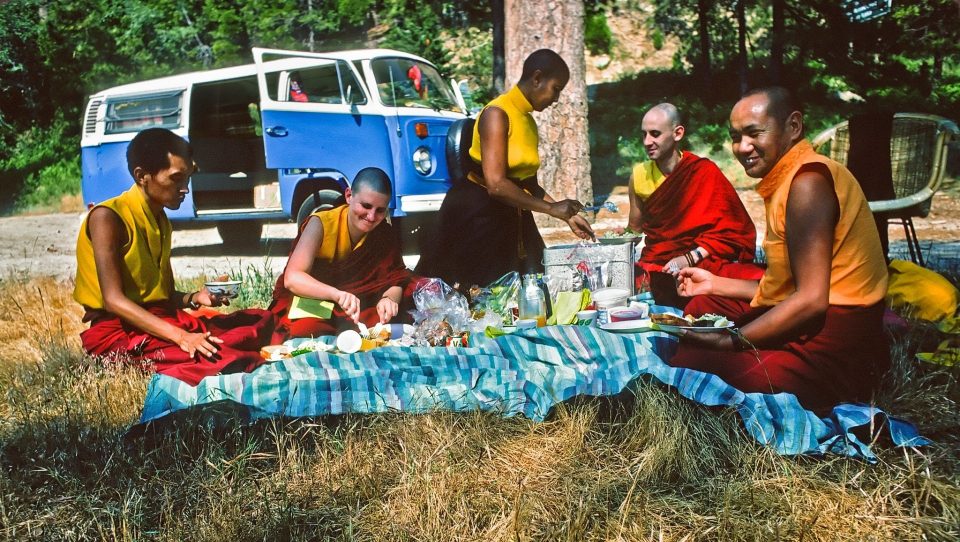
Mummy Max Mathews (center kneeling) with Lama Zopa Rinpoche, Thubten Wongmo, Nick Ribush, and Lama Yeshe, enjoying a picnic in Lake Arrowhead, California, 1975. Photo courtesy of the Lama Yeshe Wisdom Archive.
At the end of this inspiring video, Mummy Max shared: “The lamas gave me a reason to be. And it’s been my whole life. It’s the only thing that has made meaning in my life. It’s what the lamas have given me and tried to instill in me. It’s unreal. It’s unbelievable how much love and compassion they have. And I hope my life has been worth meaning for them. I tried, but I had such a long way to go. … I’m so grateful. I owe everything to the Tibetans. And anyone who gets a chance, if you pass it up, you’ll miss the greatest opportunity you’ll ever have. Thank you.”
Please pray that Mummy (Sister) Max Mathews may never ever be reborn in the lower realms, may she be immediately born in a pure land where she can be enlightened or to receive a perfect human body, meet the Mahayana teachings and meet a perfectly qualified guru and by only pleasing the guru’s mind, achieve enlightenment as quickly as possible. More advice from Lama Zopa Rinpoche on death and dying is available, see Death and Dying: Practices and Resources (fpmt.org/death/).
To read more obituaries from the international FPMT mandala, and to find information on submission guidelines, please visit our new Obituaries page (fpmt.org/media/obituaries/).
- Tagged: mummy max, obituaries, ven max mathews
13
In their last update shared in December, the FPMT Inc. Board shared their wish for all of us members of the FPMT family to work together to plan FPMT’s future and launched a collaborative process of inquiry and consultation that will unfold in stages and will culminate in a meeting (CPMT) of all the centers, projects and services of the organization, in Kopan Monastery in April 2025.
In December and January an online survey was sent to all FPMT directors, regional and national coordinators, spiritual program coordinators, study group coordinators, affiliate board members and registered teachers.
In a second step, the FPMT Inc. Board and International Office (IOF) wish to hear from all other committed students and friends from the FPMT community.
Please access the survey through this link.
Your responses will be collated, and together with the staff’s responses, will help to prepare a draft strategic framework for consultations that will be held with representatives of centers, projects, and services from April onwards in Europe, Asia, Australia, and America.
This all will culminate in the CPMT meeting in April 2025 at Kopan Monastery. We hope that this process will provide the opportunity to listen, share, discuss and co-create a strategy for the FPMT as an organization as we go forward together. This aspiration is reflected in the name given to the meeting: Advancing Our Gurus’ Vision of a World Guided by Compassion and Wisdom.
The survey will stay online through Sunday, February 18. Thanks for your contribution and support!
9
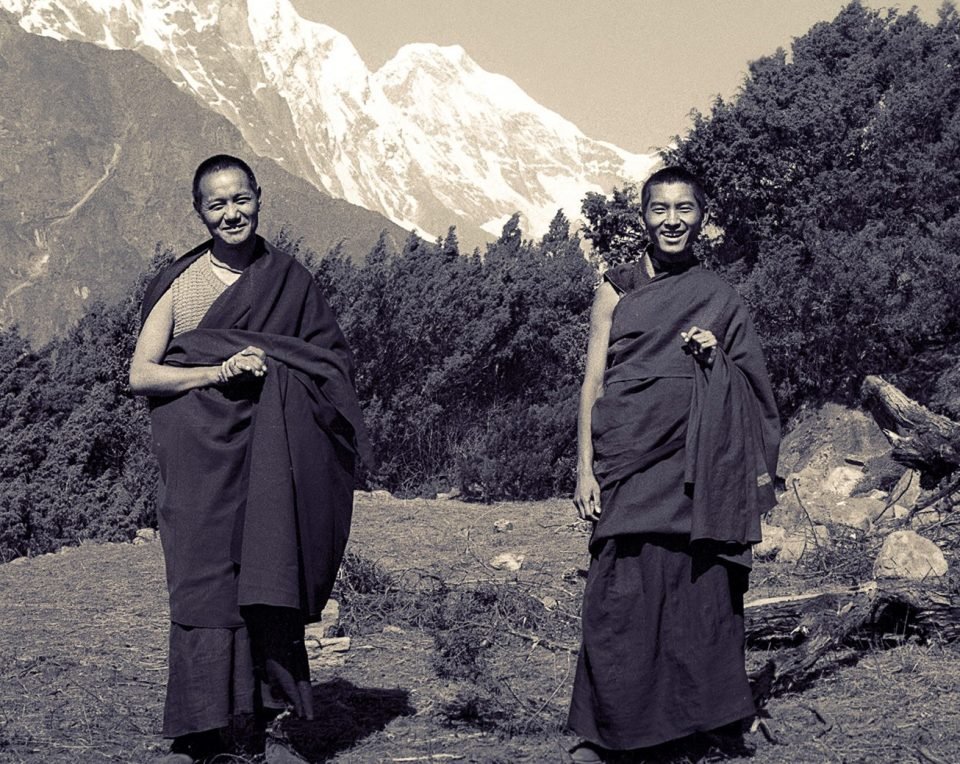
Lama Yeshe and Lama Zopa Rinpoche near Lawudo Retreat Center, Nepal, 1970. Photo by Terry Clifford and courtesy of Lama Yeshe Wisdom Archive.
Losar Tashi Delek!
Happy Tibetan new year to all our dear friends!
With love from everyone at FPMT International Office
Read more about Losar, the Fifteen Days of Miracles, and what practices to do during this auspicious period, which begins on February 10 this year!
Special thanks to the Liberation Prison Project for preparing this year’s Tibetan calendar. A limited view of the calendar is always available on “Dharma Practice Dates” as a courtesy to FPMT students around the world.
Foundation for the Preservation of Mahayana Tradition (FPMT), is a Tibetan Buddhist organization dedicated to the transmission of the Mahayana Buddhist tradition and values worldwide through teaching, meditation and community service.
- Tagged: losar
8
A Most Happy Upcoming Birthday to Tenzin Osel Hita!
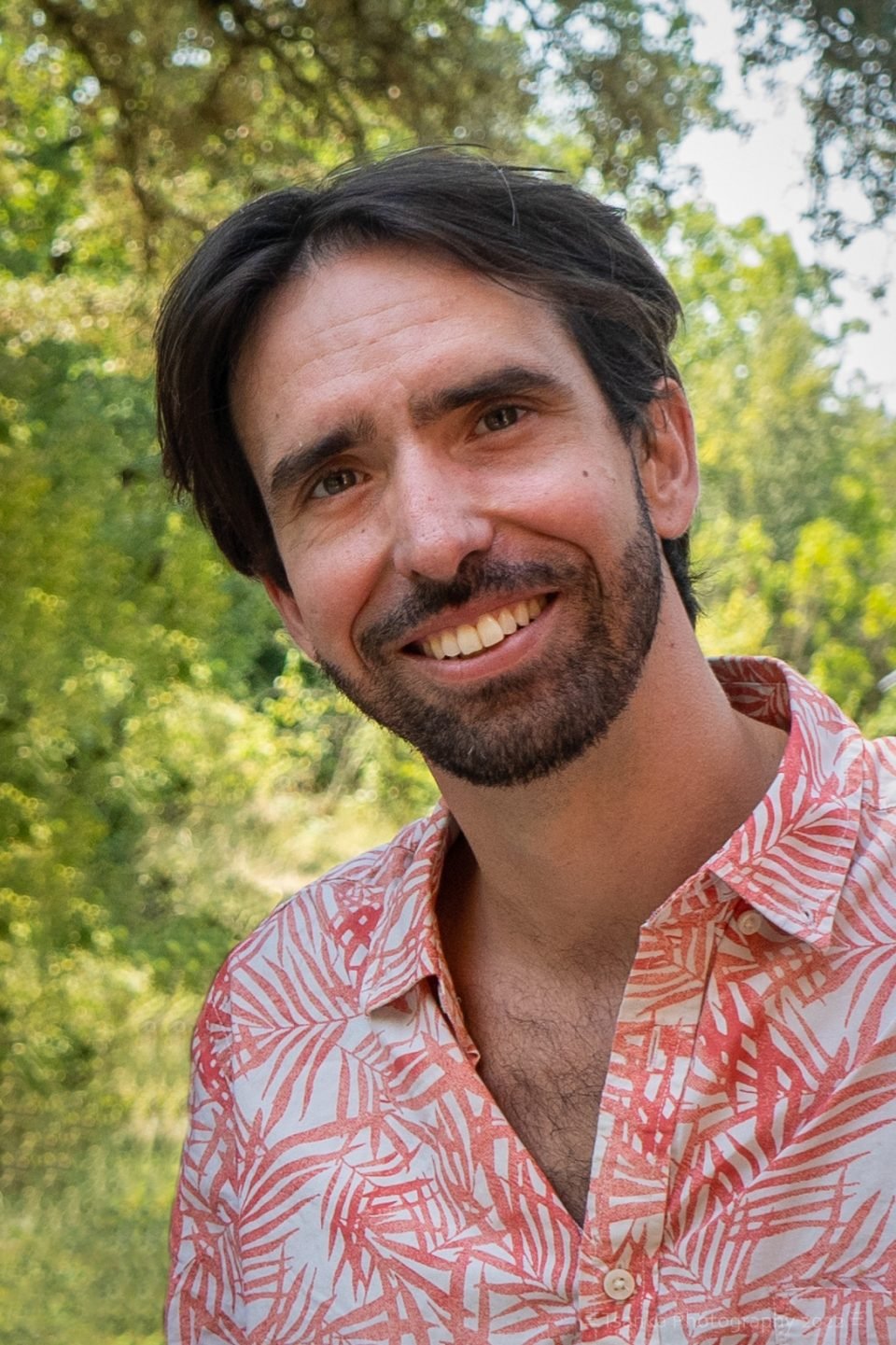
Osel Tenzin Hita. Photo courtesy of Tsanka Petkova, Institut Vajra Yogini., July 2022
On behalf of the entire FPMT organization, FPMT International Office wishes Tenzin Osel Hita a very happy early birthday (February 12) and a long, healthy life. May his beneficial activities, including his Global Tree Initiative, flourish and may his wishes manifest without delay!
There are upcoming opportunities to connect with Osel, all of which offer an online option:
“Heart of the Guru” – The 40th Anniversary of Lama Yeshe’s Passing into Parinirvana
With Tenzin Osel Hita and Yangsi Rinpoche
February 9-11, Vajrapani Institute, CA, US
Please read more about this event, including the option to join via Zoom.
“Creating Compassionate Cultures” – The 40th Anniversary of Lama Yeshe’s Passing into Parinirvana
With Tenzin Osel Hita and Venerable Robina Courtin
February 16-18, Land of Medicine Buddha, CA, US
Please read more about this event, including the option to join via Zoom.
“Dharma in the Twenty-first Century”
With Tenzin Osel Hita
February 23, Shantideva Center, NY, US
Please read more about this event, including the option to join via Zoom.
Information about the Global Tree Initiative:
https://plantgrowsave.org/
Foundation for the Preservation of Mahayana Tradition (FPMT), is a Tibetan Buddhist organization dedicated to the transmission of the Mahayana Buddhist tradition and values worldwide through teaching, meditation and community service.
- Tagged: osel hita
19
January 2024 e-News is Now Available
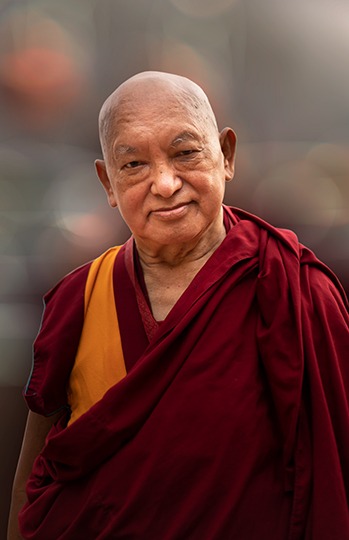
Lama Zopa Rinpoche, July 2021, Kopan Monastery, Nepal. Photo by Ven. Lobsang Sherab.
FPMT International Office wishes you a happy and auspicious new year!
This issue of our monthly e-news brings you news, resources, and special announcements including:
- News about Lama Zopa Rinpoche’s Stupa of Complete Victory
- Wisdom Publications releases a new book by Lama Zopa Rinpoche
- A teaching by Lama Yeshe
- News about the 2024 Geshe Conference
- Activities of the Lama Tsongkhapa Teachers Fund in 2023
- Newly available and revised practice materials
- Opportunities to Visit Lawudo and holy places of Rinpoche in 2024
- Changes and opportunities within the FPMT organization
and much more!
Please read this month’s e-news in its entirety.
Have the e-News translated into your native language by using our convenient translation facility located on the right-hand side of the page.
Visit our subscribe page to receive the FPMT International Office News directly in your email inbox.
- Tagged: fpmt enews
17
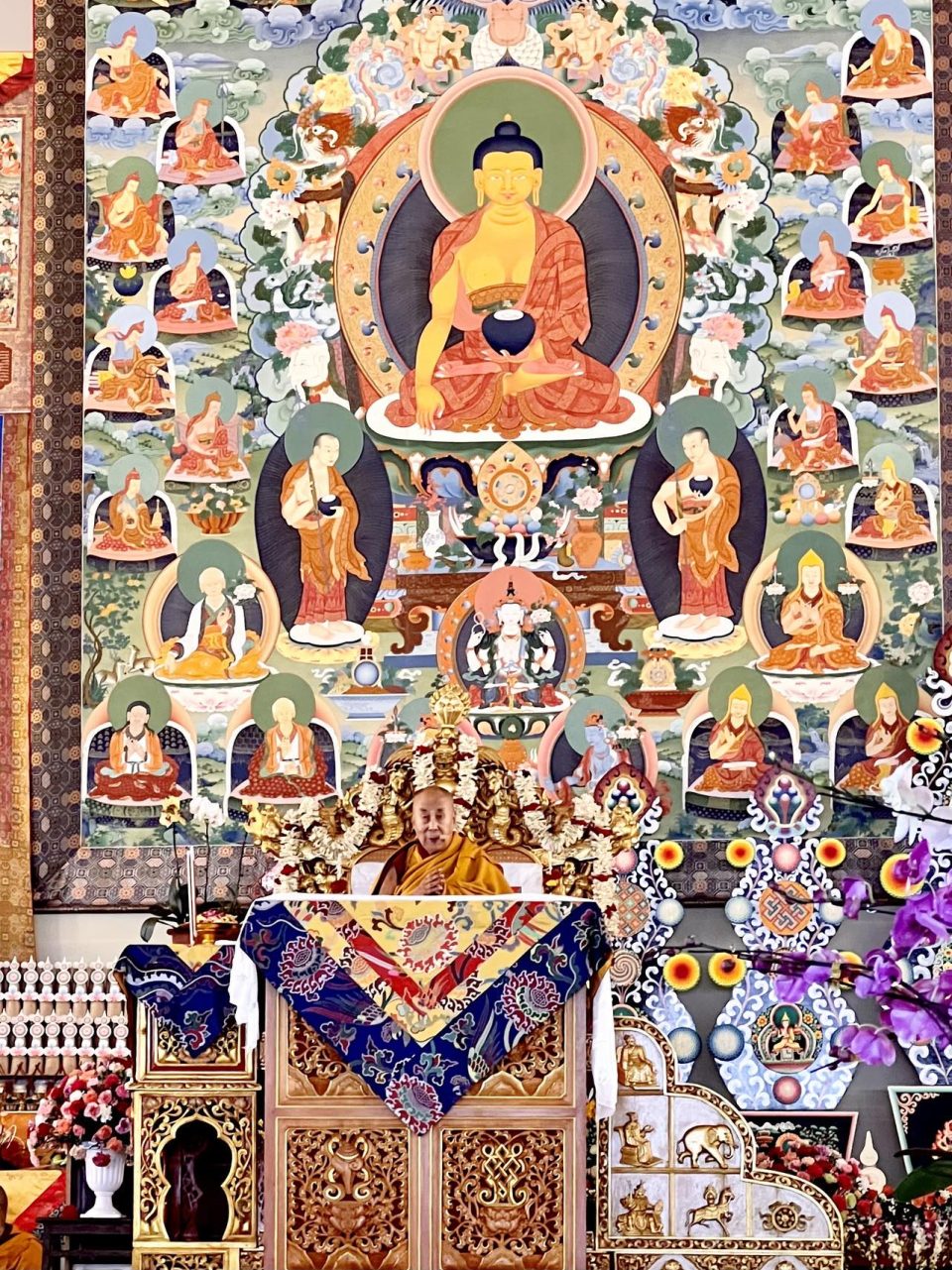
His Holiness the Dalai Lama teaching on “In Praise of the Dharmadhatu” by Nagarjuna, Bodhgaya, India, December 29-31, 2023. Photo by Cynthia Karena.
His Holiness the Dalai Lama offered teachings on “In Praise of the Dharmadhatu” by Nagarjuna in Bodhgaya, India, from December 29-31, 2023. Cynthia Karena, Tara Institute (Australia) student stayed at Root Institute during these teachings and was able to talk to other FPMT students who attended the teachings as well as Tenzin Phuntsok Rinpoche, the twenty-one year old reincarnation Geshe Lama Konchock. She offers the following report of their words and wisdom as well as many beautiful photos of the event:
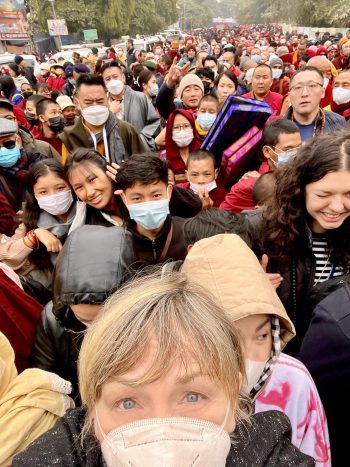
Cynthia Karena (front) takes a selfie with the crowd when leaving His Holiness the Dala Lama’s teachings, Bodhgaya, December 2023.
Words have power, and when they are spoken by His Holiness the Dalai Lama they feel like they seep into your core being.
About 50,000 people—monks, nuns and lay people—were incredibly attentive as they listened to His Holiness’s amazing teachings on emptiness as he offered commentary on Nargajuna’s “In Praise of the Dharmadhatu” in Bodhgaya from December 29-31, 2023. On the first day, His Holiness said: “I do my best to cultivate the awakening mind of bodhicitta and an understanding of emptiness every day, not with a view to this life alone.”
The teachings were followed by a long life puja on New Year’s Day. What a great way to start the year!
I talked to a few people staying at Root Institute during this time. I thought staying here without Lama Zopa would be so sad, but there is a strong feeling of him being here, which is comforting and amazing.
“Root Institute is a manifestation of Rinpoche’s inspired vision,” shared Australian nun Ven. Tenzin Namdrol.
“Everything here is Rinpoche—the prayer wheel, the Nargajuna statue, the Maitreya statue, the statues on the plinths, the gompa and how it’s designed, everything here is Rinpoche, so he can’t be not here.”
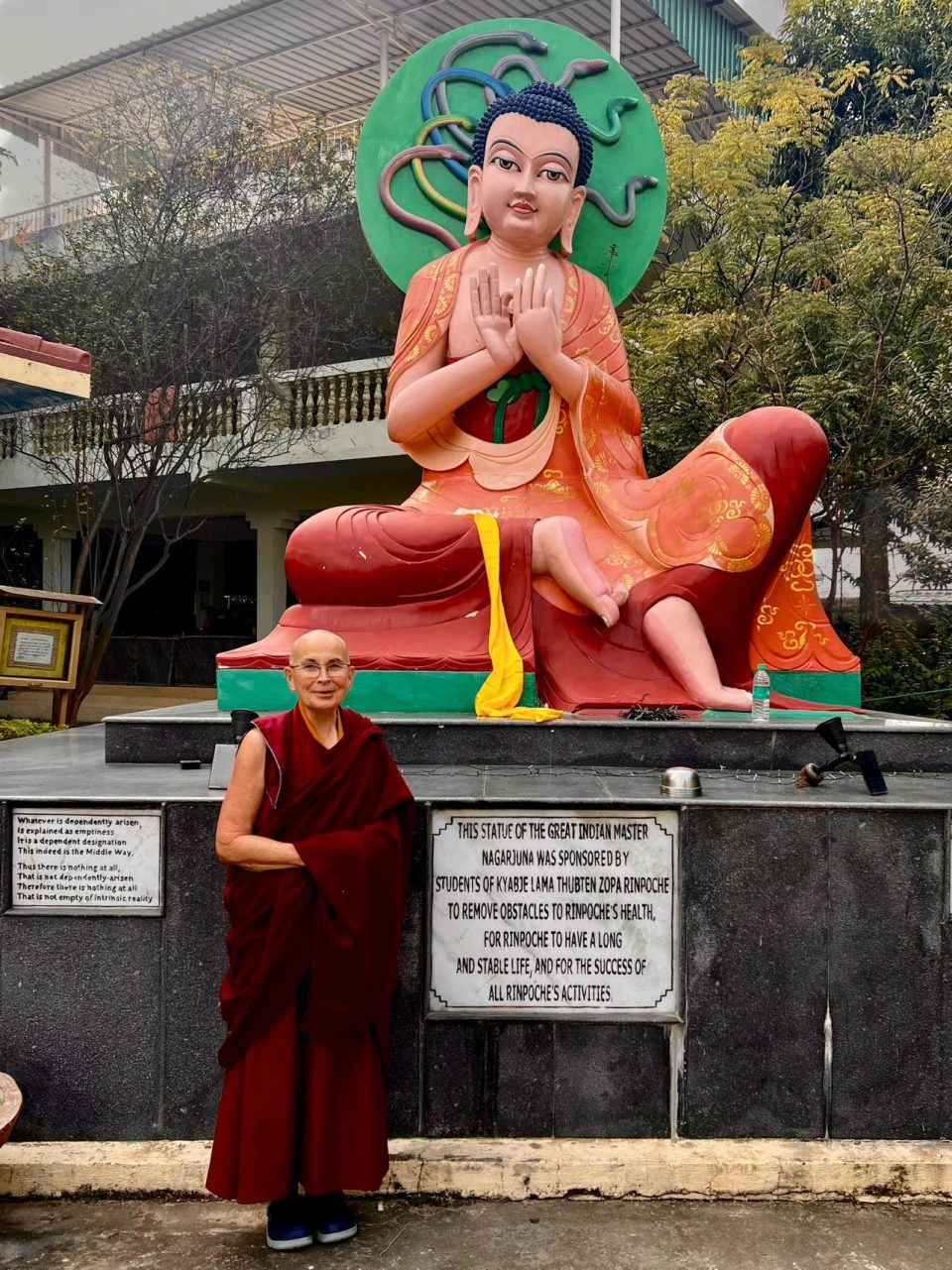
Ven. Tenzin Namdrol in front of the Nagarjuna statue at Root Institute, Bodhgaya. Photo by Cynthia Karena.
Ven. Tenzin was also pointing out all the quotes by Rinpoche displayed around the place. She says she would never stay anywhere else in Bodhgaya, and if there was no room available, she’d just sleep under the Nargajuna statue.
Mark Hebblewhite, former Tara Institute management committee member, also always stays at Root Institute. He made friends with Kabir Saxena (current spiritual program coordinator of Tushita Meditation Centre in Delhi) when they were both in Bodhgaya together during the Kalachakra initiation with His Holiness the Dalai Lama in December 1985.
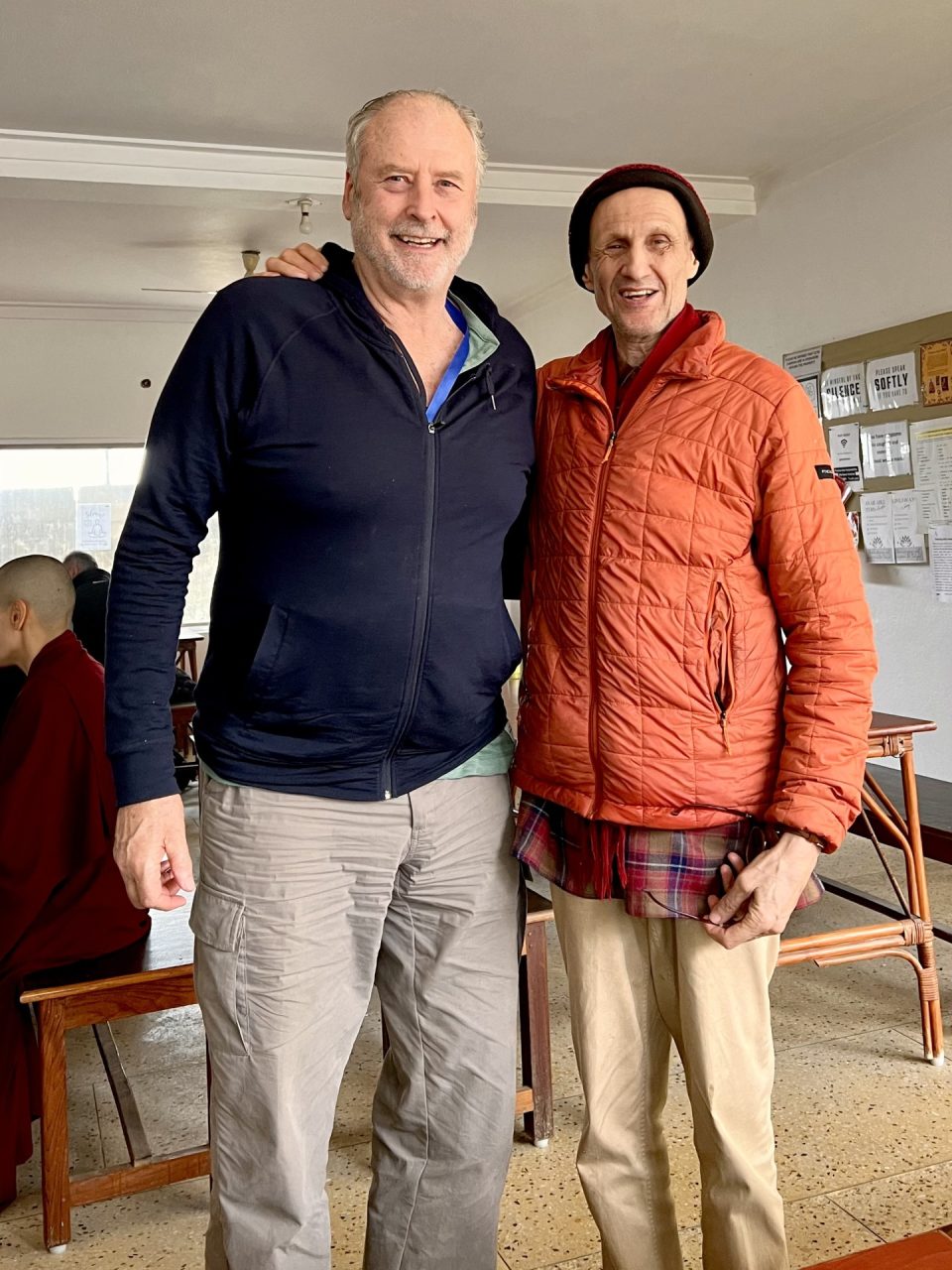
Mark Hebblewhite and Kabir Saxena, dear old friends. Photo by Cynthia Karena.
“Kabir and I were part of the advance team for FPMT,” says Mark. “Kabir was here trying to find land for Root Institute, and I’d been asked to set up a restaurant to feed the Westerners who came to the Kalachakra. ”They were in Bodhgaya together for three months and formed a decades-long friendship.
Mark also feels that Lama Zopa is still here. “He was here just last January,” reminds Mark. “Central at Root is a large prayer wheel. It has a clear bell that rings with each rotation of the wheel. I was told that Rinpoche was always pleased to hear that bell ring, day and night. I’ve been going out of my way to ring that bell loud and often during this visit. It pleases Rinpoche.”
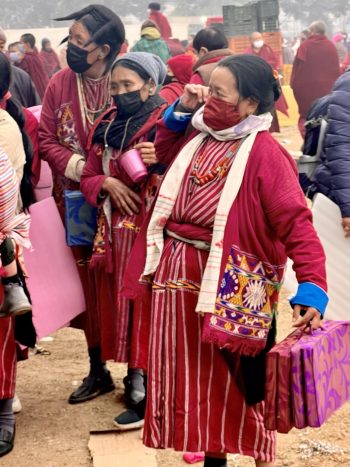
Pilgrims joining His Holiness’s teachings in Bodhgaya, December 2023. Photo by Cynthia Karena.
Mark noticed that the Dalai Lama’s constant theme, “that he kept coming back to,” was the problem we have as a whole society, dividing humanity up into us and them. “And that’s based on ignorance. There are lots of antidotes to that sort of separated thinking, but it doesn’t come easily. He’s hoping that all people, including those here in Bodhgaya, can live in a way that they cease to be so divisive in the way they see humanity.” Mark thinks this is an ambitious idea. “Even for experienced students that’s really hard; so how easy is it going to be to achieve this? And we’re the ones who are here listening. I think it’s highly aspirational, but that’s the aspiration and Tibetan Buddhists are highly, highly aspirational.”
His Holiness talking about emptiness resonated with Mark. “There was a good lesson yesterday about the ‘I’ that’s labeled or designated upon the aggregates, which have arisen as a result of karma and causes, and the ‘I’ that’s overlayed on that, and which then engages in our life’s dramas. And the discipline and the mindfulness (required) to see which one we’re talking to or thinking about or identifying with at any particular time. That’s a work in progress, because the one that’s validly designated is not the one that gets caught up! That’s really a work in progress for me.”
Echoing Mark’s observations about His Holiness’s comments about the current state of the world, Ven. Lindy Mailhot, director of Chag Tong Chen Tong Centre in Hobart Tasmania, was moved by His Holiness’s words. “It felt so urgent, really urgent. There was something different today. His Holiness has said these words before, but it felt different today. There was an urgent message for the world. His Holiness also told us his realisations so publicly. It broke my heart but I don’t know why. I’m still thinking about it. His Holiness was making an urgent point. He was saying that enough is enough, and that compassion is the way forward; the world can’t continue like this anymore.”
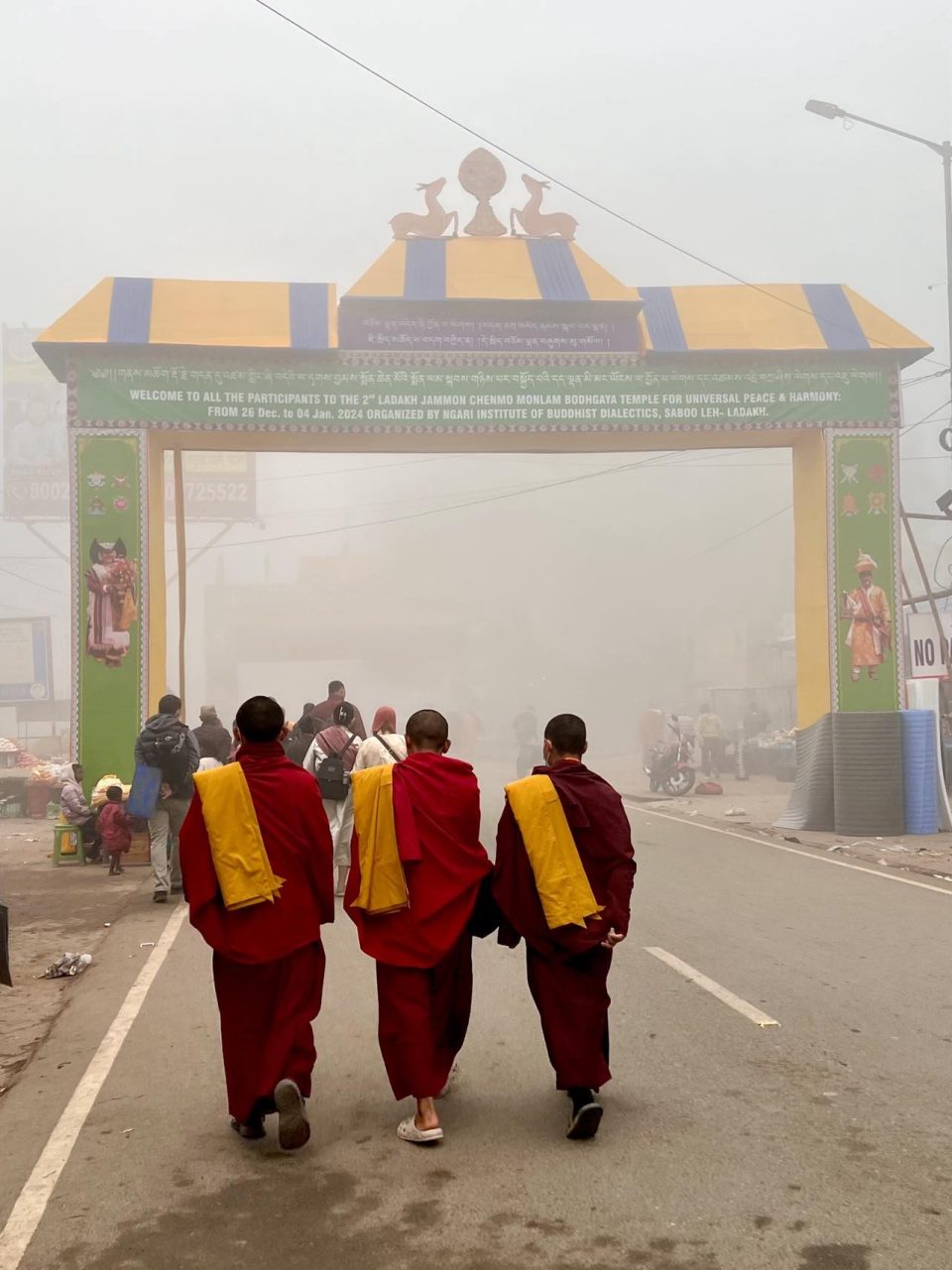
Monks in the mist, going to HIs Holiness the Dalai Lama’s teachings, December 2023. Photo by Cynthia Karena.
I also had a quick chat with the twenty-one year old Tenzin Phuntsok Rinpoche, the reincarnation of the great Geshe Lama Konchock, about His Holiness’s teachings while we were waiting for others to come and meet him.
Talking about afflictions, Phuntsok Rinpoche said, “you can’t see them.” “For example,” he explains, “the light rays of a butter lamp inside a pot would not be able to come out. So it’s the same thing for us. Our Buddha nature is covered up by afflictions. It’s hard to see it, but once everything’s been cleared, the nature comes out.”
He re-iterated His Holiness’s teachings by emphasizing that we need both wisdom and method when practicing Dharma. “I found that really important nowadays as well since I’m studying the wisdom part of it. I see that the studying part is important, but also we need to apply what we have been studying into the method as well, because just studying is not the end point of it. The whole point of studying and debating the philosophical side of Dharma is to be able to practice, is to be able to meditate, and to be able to visualize whatever we are studying. That’s the main point. So I felt that it applies to my life, and very important for all Dharma practitioners to focus on both sides of it (wisdom and method) no matter what level they are. Even if you are learning a little bit, you can apply what you’ve learnt into practice. And that is better than learning it and not applying it in real life at all. (His Holiness’s talks) were inspiring and apply to me as well.”
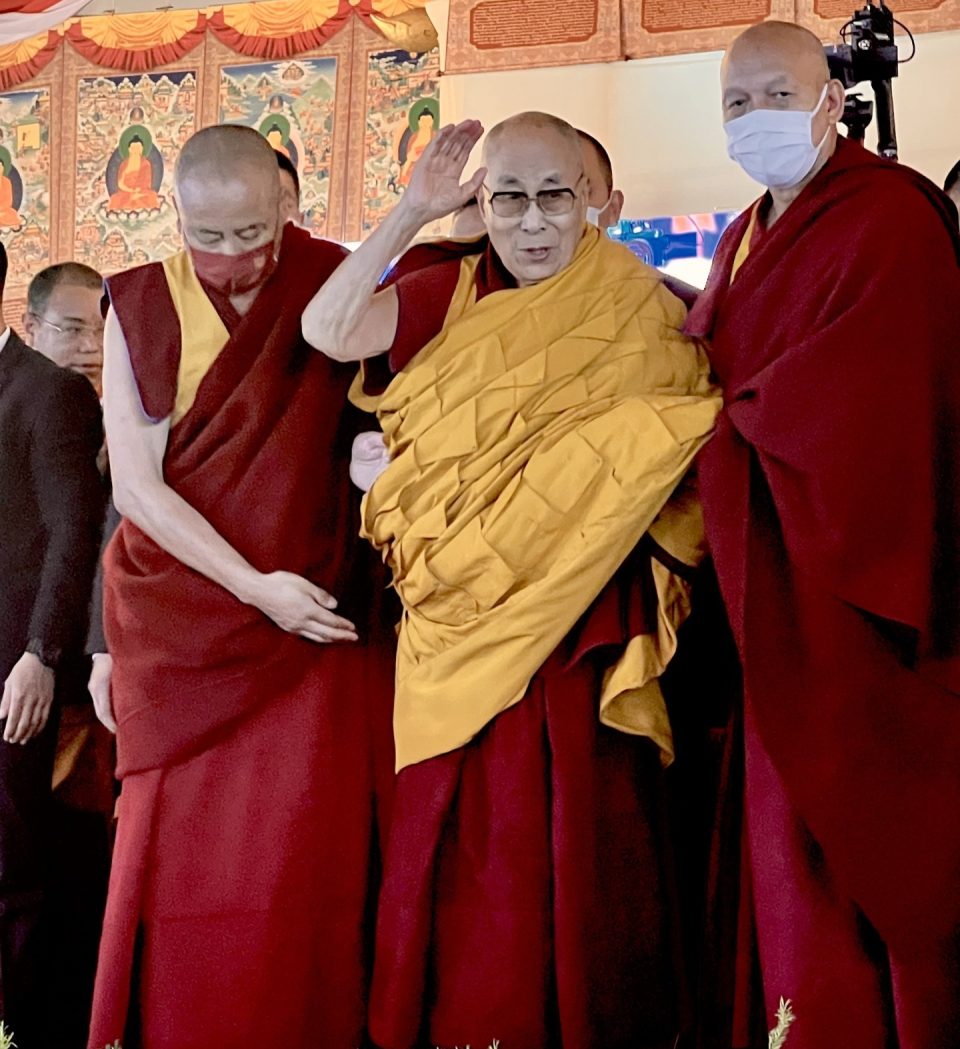
His Holiness waving to the crowd in Bodhgaya, December 2024. Photo by Cynthia Karena.
I also had the good karma to meet Phuntsok Rinpoche again at Gaya airport where we chatted for around an hour before our plane left about everything from the Eight Verses to monastery life and teaching techniques for the West.
The chatter among our group after meeting Phuntsok Rinpoche and earlier with Tenzin Urgyen Chonyi Rinpoche, the fifteen year old reincarnation of the great Khensur Urgyen Tseten, in Bodhgaya is that we feel incredibly fortunate that these young lamas (and others some of the group met at Sera Je Monastery a few weeks earlier) are part of the future of Tibetan Buddhism.
Hopefully we’ll still be around when they start teaching.
We offer grateful thanks to Cynthia Karena for offering this moving report and photos.
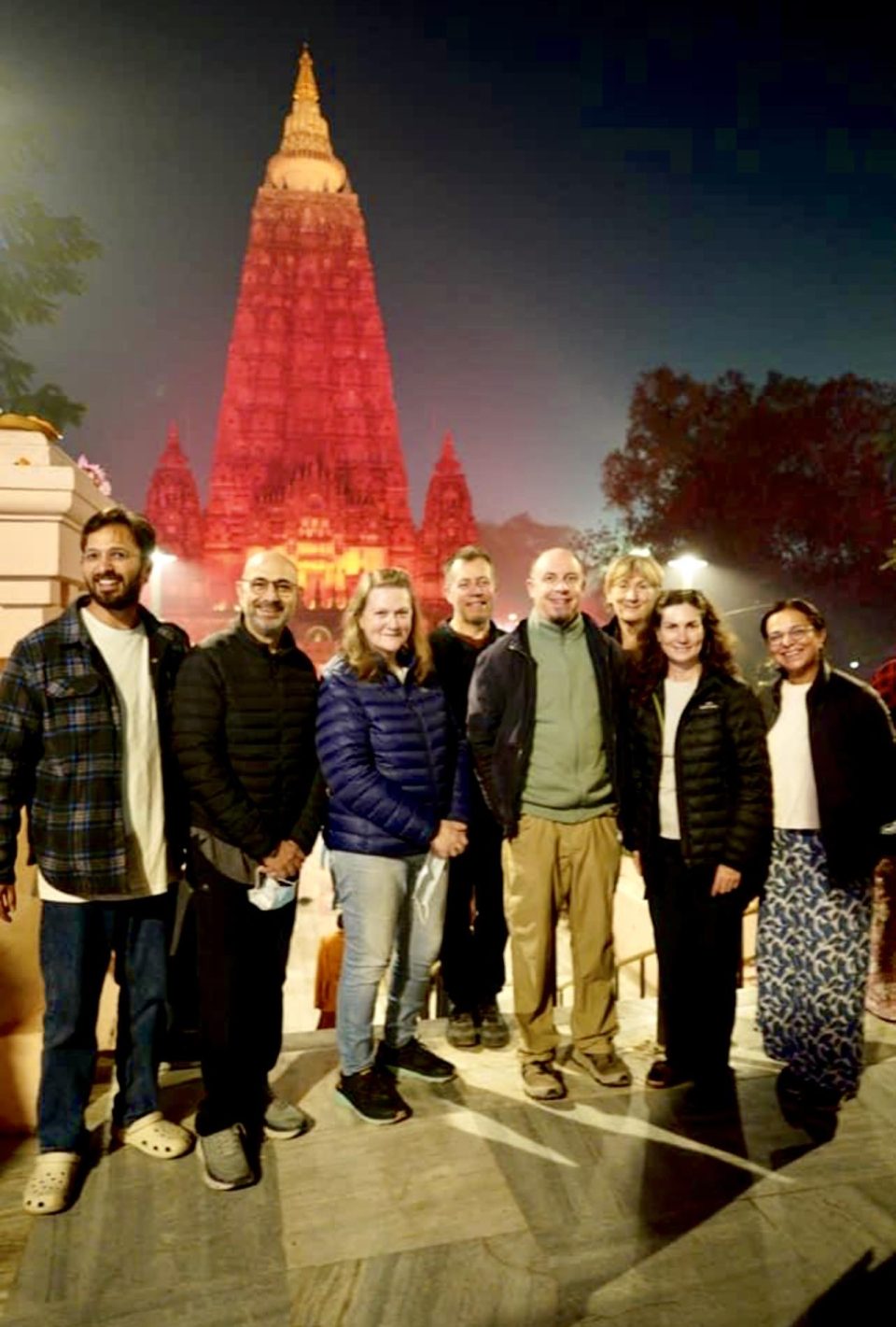
Tara Institute students in Bodhgaya together for His Holiness’s teachings. Photo by Damien Busby.
For more information on His Holiness the Dalai Lama and his beneficial activities, please visit DalaiLama.com and also view His Holiness’s public schedule.
FPMT.org brings you news of activities, teachings, and events from over 150 FPMT centers, projects, and services around the globe. If you like what you read, consider becoming a Friend of FPMT, which supports our work.
10
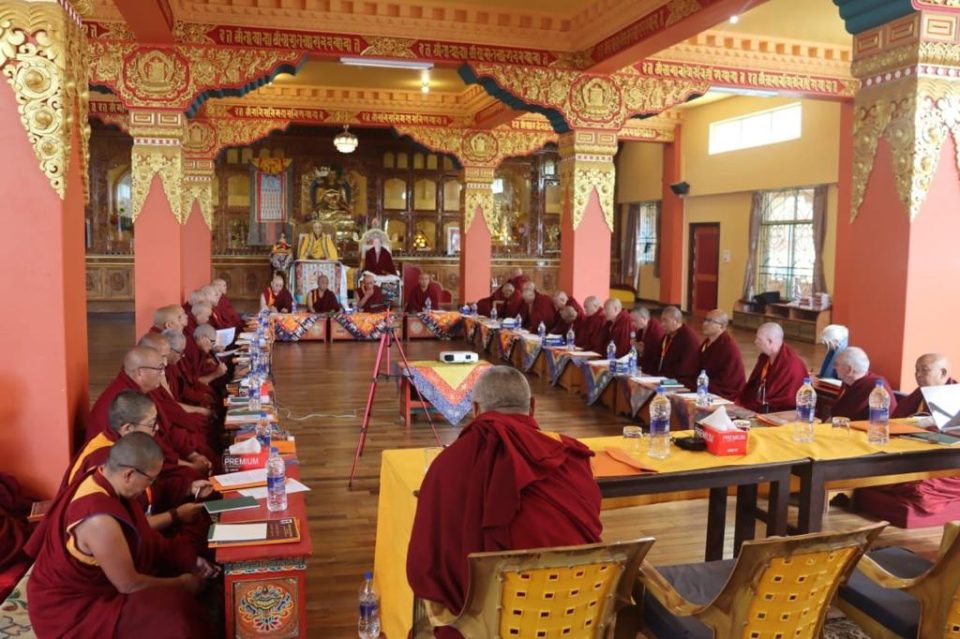
FPMT Geshe Conference at Kopan Monastery currently underway.
With great rejoicing we share that a truly auspicious meeting is occurring (January 9-14) at Kopan Monastery which has incredible significance for the FPMT organization.
More than thirty FPMT geshes and geshemas from around the world, joined by five FPMT Inc. board members, have convened at Kopan, the very heart of the FPMT organization, for three days of sharing, rejoicing, problem solving, and prayers for the swift return of Lama Zopa Rinpoche (including Chanting the Names of Manjushri and Rinpoche’s swift return prayer in front of Rinpoche’s holy body). At the conclusion of the conference, the group will engage in an all-day Most Secret Hayagriva tsog and then a two-day pilgrimage together around Kathmandu.
Ven. Roger Kunsang reports from the conference that the event is going extremely well and the FPMT family spirit is blossoming with a strong sense of unity.
Ganden Tri Rinpoche and His Eminence Ling Rinpoche have each addressed the assembly of geshes, and we look forward to sharing details of these talks once they become available.
We will provide a full report of this extremely important event once it has concluded and participants have had the opportunity to reflect.
Please watch this video of the FPMT geshes reciting Chanting the Names of Manjushri for Rinpoche’s swift return, prior to the start of the conference on January 8, 2024:
Foundation for the Preservation of Mahayana Tradition (FPMT), is a Tibetan Buddhist organization dedicated to the transmission of the Mahayana Buddhist tradition and values worldwide through teaching, meditation and community service.
- Tagged: fpmt geshe conference
8
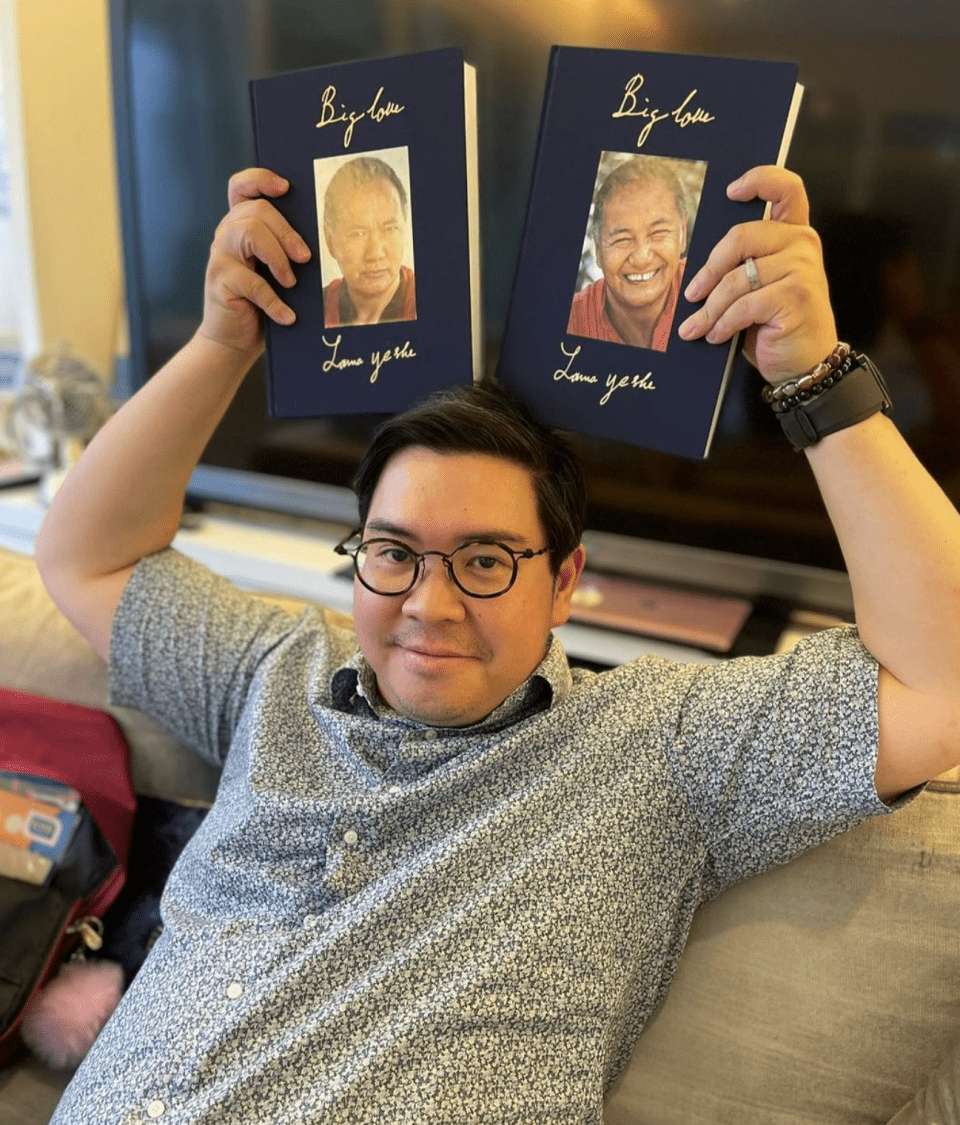
Chung Han posing with Big Love , the biography of Lama Yeshe. Photo from Chung Han’s Instagram page.
Lee Chung Han passed away at age 43 on October 22, 2023 in Malaysia from leukemia.
Below we share an obituary for Lee Chung Han and also a special interview with Gomo Tulku Rinpoche detailing the close friendship and mutual support he shared with Chung Han right up until the time of his passing.
Obituary of Lee Chung Han
Submitted by Chung Han’s family
The late Dato’ Lee Chung Han—beloved son, husband, father, friend, leader, colleague, teacher, and disciple—lived a life full of selfless acts. Just as his smile has lit up rooms and hearts, his ever giving spirit has illuminated all of us, even those whom he’s never met.
At his wake, his many school friends, colleagues and business associates came to rekindle fond memories and to pay tribute to someone special for his character and faith and the impact he had on their lives.
He excelled academically and socially in Kuen Cheng Chinese Primary School and Garden International School in Malaysia, and later in Epsom College, London School of Economics, and Oxford University in the UK. He began his career in CIMB Investment Banking, followed by Air Asia, Tunes Group and Lotus Ltd ( F1 racing). He then went into the mineral mining industry. He was elected as President of the Alumni of the Oxford University Business School and a board member of the SME and Entrepreneurs Business Award.
Despite his busy work schedule he involved himself in several environmental activities. He initiated the activist group “Save Pulau Langkawi Gunung Raya Forest Reserve” which is 93 acres of virgin rainforest. He was a board member of Universal Clear Light which had begun Global Tree Initiative. In his compassion for animals he supported the Kuala Gandah Elephant Sanctuary in Pahang state, which provides protection for the wild elephants.
He took his community obligations earnestly when he was appointed President of the Taman Pantai Residents Association, where he lived and grew up. He was a committee member of a community run garden in the city called Kebun-Kebun Bangsar.
Early into his working career he was drawn into Buddhism and soon became a loyal and devoted student of Lama Zopa Rinpoche.
Much saddened by the death of his guru in April 2023 he traveled to Kopan Monastery in Kathmandu to pay his respects. A few weeks later he joined the FPMT delegation in Dharamsala to offer a long-life puja to His Holiness the Dalai Lama and the following private audience with His Holiness..
To those who have known and met him, Chung Han came across as a kind hearted, considerate, intelligent man who cherished his family, Sangha, friends and his Dharma brethren and sisters.
In keeping Han’s light alive his friends and family are providing Orang Asli families in the state of Pahang, Malaysia with better access to water—the most essential element of life. More than 40 wells, which include water pumps and storage tanks, complete with piping systems are being provided to clusters of Orang Asli households.
His legacy of selflessness will live on in us, through our acts of compassion and generosity.
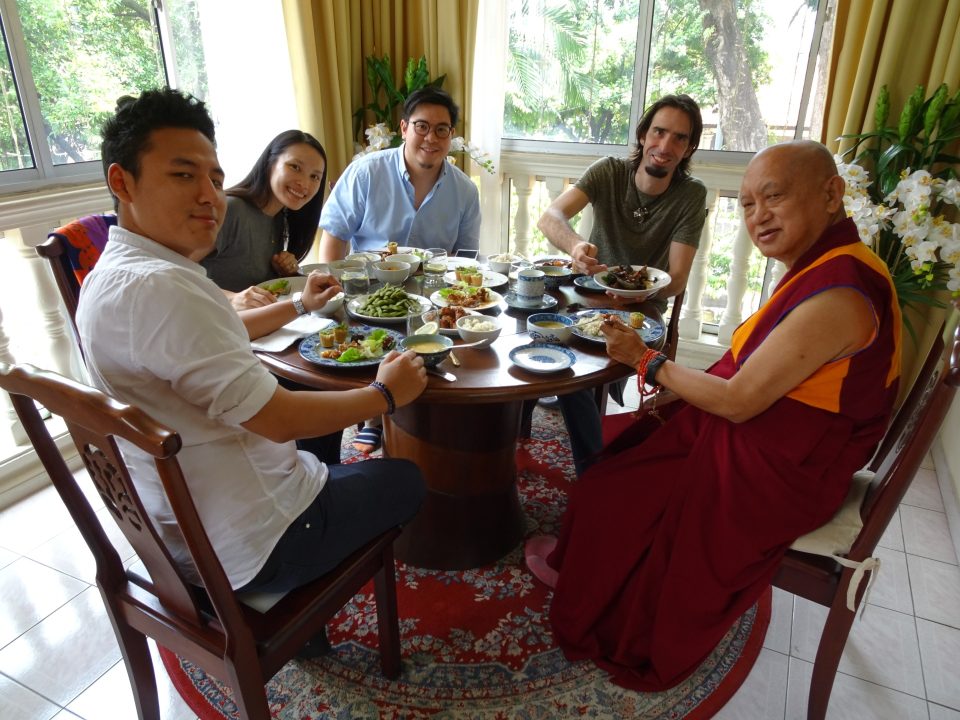
Gomo Tulku, Chung Han, Chung Han’s wife Tze Hua and Tenzin Osel Hita having lunch with Lama Zopa Rinpoche in Malaysia, 2016. Photo by Ven. Roger Kunsang.
An Interview with Gomo Tulku Rinpoche
When did you meet Lee Chung Han? Can you tell us about your relationship and history?
In the beginning of 2016, I was on a short vacation in Asia when I received a call from Lama Osel, saying he would like to join me. He arrived after a few days and later also proposed a trip to Malaysia at the invitation of a friend in Kuala Lumpur. At first, I declined the invitation as I had no clue who this friend was but interestingly this friend was persistent and kept inviting the two of us to visit him. He also offered to travel together to Penang, where Lama Zopa Rinpoche was going to give the Hayagriva Initiation. If I remember correctly, I still refused the offer but he requested a third time, at which point I felt I needed to know this person and so I agreed to his invitation. That’s how I first met Chung Han.
From then on our relationship quickly evolved to a friendship that spanned more than seven years, until his passing. Both of us being staunch Buddhists and having a shared interest in business, he kindly allowed me to work alongside him in his mining endeavor.
During my time in Malaysia, I would sometimes wake up as early as 3:00 a.m. to visit mining sites with his team and geologists, driving for around 4 hours only to walk for a few more hours in order to explore potential sites. I also participated in his weekly company meetings and gained valuable insights into the business. I attended many of his meetings with politicians, businessmen, government officials, and royal family members. He was someone with big ambitions and, as a result, he was also involved in various industries. I was sort of his right-hand man and the C-suite support for his company SMGB. Working with him in 2016 and 2017 really felt like I was going through an MBA course, if not more.
After I left working with SMGB we kept up our friendship and continued to support each other. I helped organize pujas and prayers for him and when the pandemic hit in 2020 and 2021, he was there in solidarity with I Saved A Life, a nonprofit I founded, contributing to its emergency response projects in India.
When did you hear that he was having health difficulties?
On September 23, 2023, one of his cousins called me with the news of his situation. Having confirmed with his brother, I immediately booked the earliest flight to Kuala Lumpur and visited him. During my stay there I managed to see him a few times, with our last meeting occurring 12 days before he passed away.
Can you tell us about the support you offered to him while he was at the end of life?
As a friend, I offered my time, jokes, and affection but also, in my capacity as a Rinpoche, all the Dharma support I could provide. I offered advice on certain practices and how to navigate his thoughts and facilitated connections to receive blessings and guidance from prominent Rinpoches. Our connection deepened further during his hospital stay. We reminisced, shared laughter, and even shed tears together. In those precious moments, I arranged FaceTime calls with Khensur Lobsang Delek Rinpoche, Jhado Rinpoche, and Tsa Woesel Tulku. During these calls I translated their Tibetan guidance into English for him. It was a beautiful moment to witness him expressing his gratitude to the great masters in Tibetan, repeatedly saying, “Thugje che” with folded hands just
before ending the calls.
Could you tell me about his life and the impact he had on others?
While his family is better positioned to answer this question, to me he was a friend always willing to help, a businessman full of creative ideas, and a genuine optimist. His commitment to Dharma was equally strong, engaging wholeheartedly in pujas, Dharma activities, and charitable projects. Additionally, I recently learned from his parents that he was the one who brought them to the Dharma. This is noteworthy as, in Asian families, it tends to be the other way around.
I would like to end by saying I’m truly grateful to Chung Han for his friendship and kindness, for giving me a place to stay when I was in Kuala Lumpur, for supporting my charitable projects, for all that he showed me about business and, most of all, for his unwavering faith in the Dharma, especially in Lama Zopa Rinpoche.
Grateful thanks to Gomo Tulku Rinpoche for sharing these intimate details of his friendship with Chung Han.
Please pray that Chung Han may never ever be reborn in the lower realms, may he be immediately born in a pure land where he can be enlightened or to receive a perfect human body, meet the Mahayana teachings and meet a perfectly qualified guru and by only pleasing the guru’s mind, achieve enlightenment as quickly as possible. More advice from Lama Zopa Rinpoche on death and dying is available, see Death and Dying: Practices and Resources (fpmt.org/death/).
To read more obituaries from the international FPMT mandala, and to find information on submission guidelines, please visit our new Obituaries page (fpmt.org/media/obituaries/).
- Tagged: obituaries, obituary
2
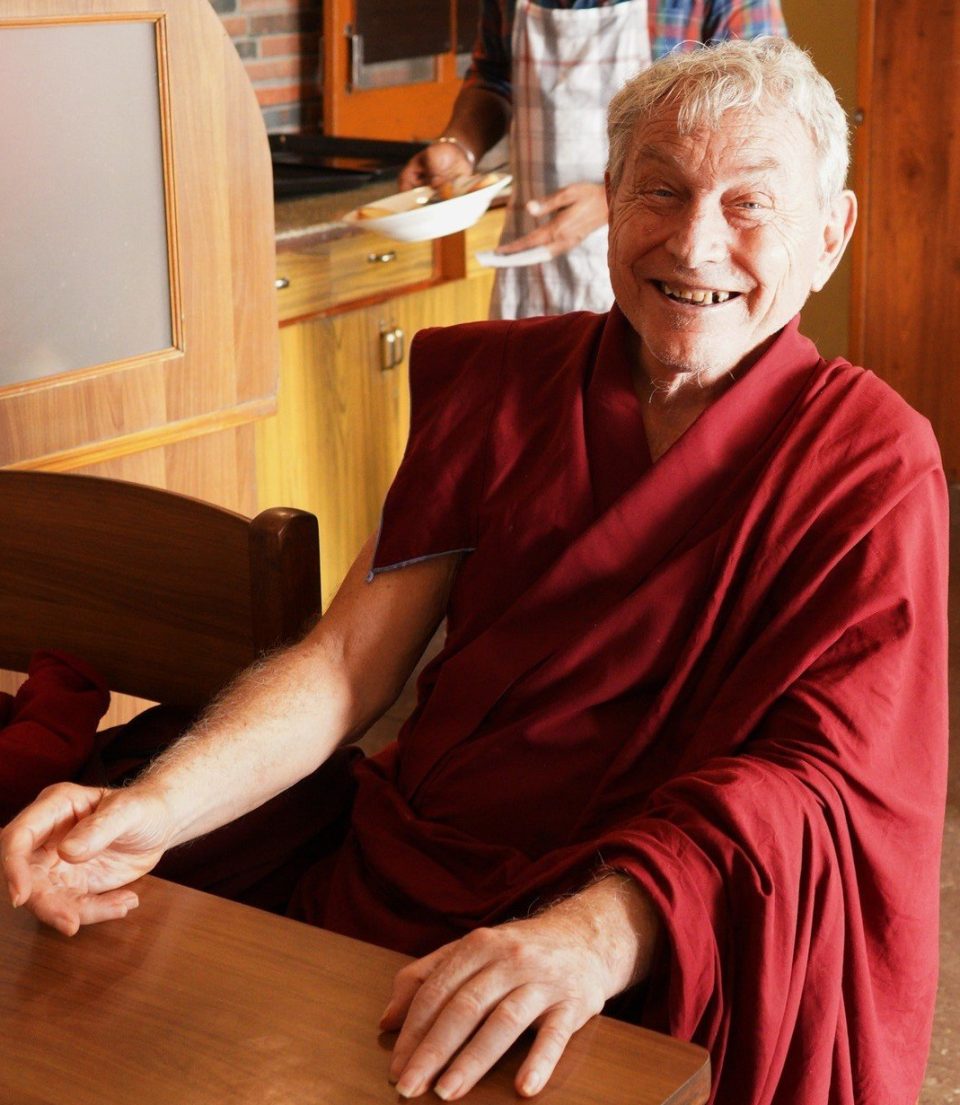
Ven. Thubten Gelek (Max Redlich) in Dharamsala, 2022. Photo courtesy of Tara Institute Facebook page.
Venerable Thubten Gelek (Max Redlich) passed away on November 26, 2023 in New Delhi, India.
Venerable Gelek, born July 13, 1944, was an IMI sangha member who offered many decades of service to the Dharma, starting in the early years of the FPMT organization. Below we share words from friends, and passages from Big Love: The Life & Teachings of Lama Yeshe, to celebrate Ven. Gelek’s devoted service to Lama Yeshe, Lama Zopa Rinpoche, and the FPMT mandala.
An excerpt from the Tara Newsletter by Pete Giuliano gives praise to Ven. Gelek’s contributions to Tara Institute in Melbourne, Australia:
“Max was instrumental in the founding of Tara Institute in the early formative days of the center. He had been Co-Director of Tara House with Uldis Balodis in Kew up to 1982 . At the completion of his service, Lama Yeshe apologized for having pushed him too hard. Max did a lot of the work in finding 3 Crimea Street and famously predicted we would outgrow it within five years. We moved to Mavis Avenue in 1987, where he stayed with us over several different periods. He has been based in India for many years but would often return to Melbourne.
Adele Hulse, the author of Big Love shares about Ven. Gelek:
“His father was from a family of successful Jewish butchers and Redlich Butchers is still trading. His mother was a non-Jewish woman from Vienna, a model who once had to pose for Hitler. Max got into the meat trade. He wore white boning-room clothes and white boning-room boots and had a car and a driver because he was so busy and so successful. Then he heard Lama Yeshe speak in Melbourne and realized he had to change his entire life.”
More from Adele on her memories of Ven. Gelek:
“I had a very young child who was in and out of hospital when Max asked me if I would run a fashion business, importing from Ven. Marcel in Kathmandu and from the Delhi Centre. I had no business experience whatsoever. A week later $150,000 worth of baled stock arrived at my house and I ordered racks and got a secretary. Max arrived early every morning for a week, bearing beautiful fruit and cakes from Acland Street and made me breakfast while lecturing me about business. He started at the beginning and ended by telling me how you close a business. Everything happened just as he said it would. Three years later it was time to shut the business down because the purpose had been served – to create a profile to convince a bank to give a loan – and we were not in the fashion business. Max was unfailingly kind and patient and wrote me long letters about business.
I still have them.”
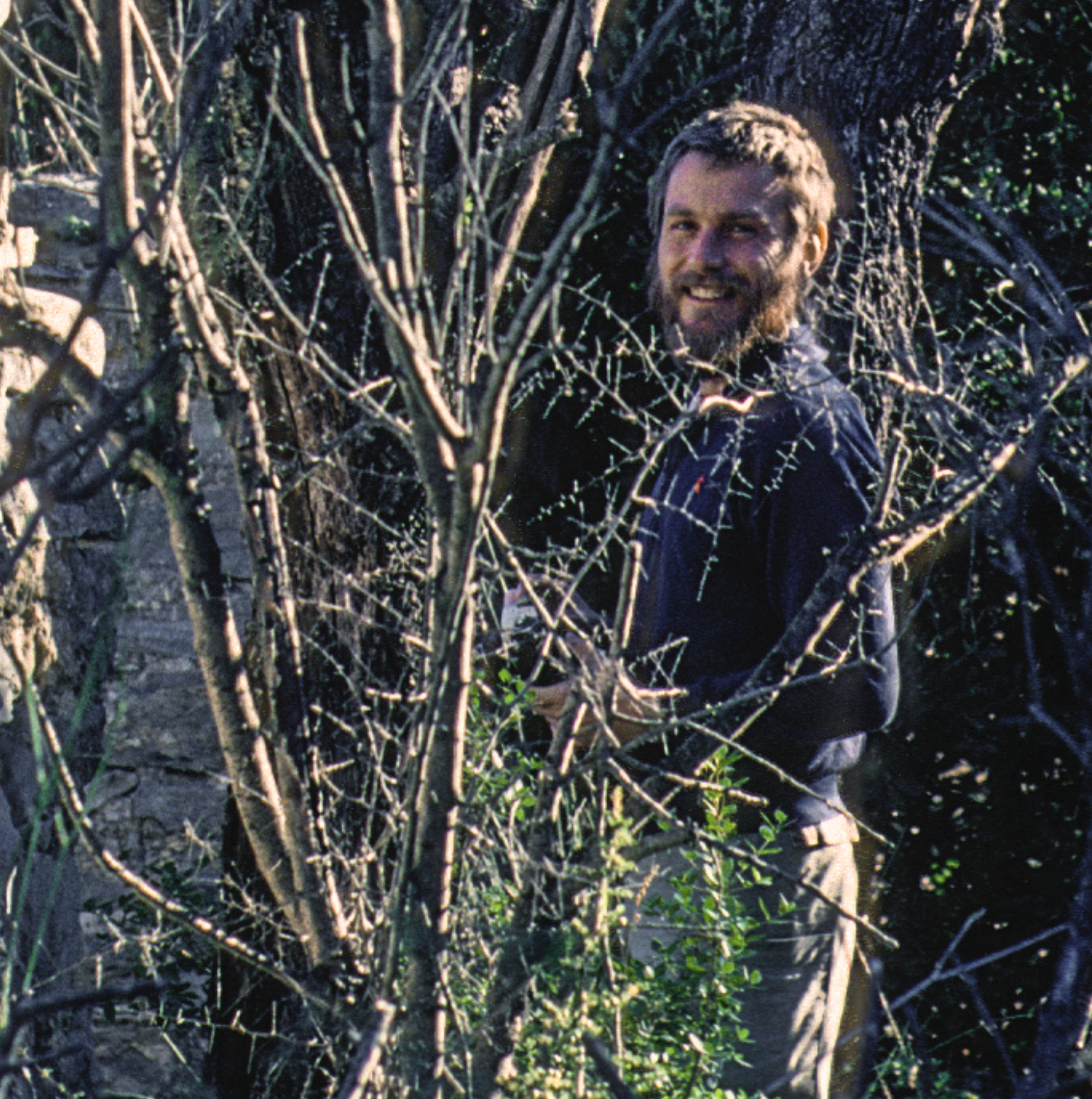
Max Redlich, Dharamsala, 1978. Photo courtesy of Nick Ribush.
Longtime Lama Yeshe Wisdom Archive director, Nick Ribush, recounts Ven. Gelek meeting the Dharma:
“I knew Max in Melbourne in the 60’s, several years before either of us had even heard the word ‘Dharma.’ I didn’t know him well, but he did seem to live the fast, high life of someone with plenty of money. Then, after I had left Australia in 1972 and finished up at Kopan, I didn’t hear of or from him until 1977, when I was giving a ten-day meditation course near Melbourne and he came up to see me there. He looked very cool, with long red hair down to his waist and a beautiful svelte girl on his arm, wondering what it was that I and, by now, many of his friends had gotten into. He wasn’t about to stay for any of the course, so I told him that if he really wanted to know he’d have to go to Kopan for the November course and hear it directly from the Lamas themselves. He did, and the rest is history.”
A excerpt from Big Love shares this first experience at Kopan in Ven. Gelek’s own words:
Many of his friends had become Lama’s students, but he found their devotion ridiculous. “[Lama Yeshe] was talking about emptiness and this guy asked if you would lose your personality if you realized emptiness. Lama said, ‘No!’ and shrieked with laughter. The guy was ready with more questions, but Lama was just bursting with laughter and I think that’s when he got me.”
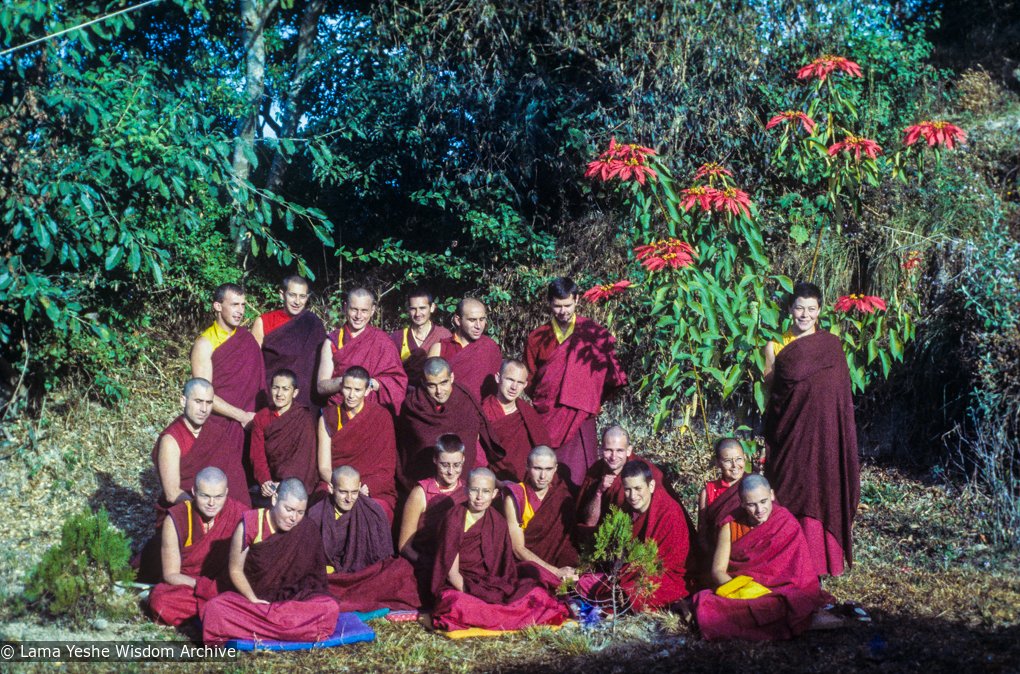
Ordination group with IMI sangha at Kopan Monastery, Nepal, January 1979. Ven. Max is pictured back row, third from left. Photo Courtesy LYWA.
More from Big Love on Ven. Gelek’s early connection and service to Lama Yeshe:
At first skeptical of the level of devotion evident among so many of his friends, Max had changed after watching his father die. He became super-devoted and ran around trying to do good in any way he could. Lama called him “Max Relics” and found plenty for him to do. There was no end to Lama’s orders and Max tried to do it all.
“One day I was tearing around trying to do everything as usual and a drop of rain fell,” Max recalled. “So I raced around, found an umbrella and came back only to tear off to do something else. I was erratic and overly busy. Lama just gave me this disparaging look, shook his head and said, ‘Jewish army!’ I’d been in the Israeli army during the Six-Day War in 1967, so Lama was indicating I was anything but disciplined. Whenever we were looking for praise, he made sure we didn’t get it.”
… Max was asked to help Lama Yeshe pack. “I gathered it was a big deal to be asked to do this, but I had no idea what to do. I was just standing there waiting for instructions when Lama asked me to sit on the bed. I had a hunch he was about to play a trick on me and sure enough, a rubber spider suddenly appeared. He thought it was so funny when I instinctively moved out of its way. I stood up and Lama actually picked me up and walked with me around the room, carrying me. Lama Zopa Rinpoche was there too. I just didn’t know what to think,” Max recalled.
“[1978] Then it was time to go. Lama sat in a rocking chair in this big sitting room at the back of Manjushri Institute and about a hundred people lined up to say goodbye to him. They came in the door and bent low as they gave him a khata. The warmth and love between them each time was palpable. He treated each individual student as if they were the only one in the whole world, even though they were with him for just sixty seconds. It actually gave me some idea of what he meant when he said, ‘Communicating, dear? You communicating?’ Lama definitely communicated.
“I assumed it was Nick who had arranged for me to become Lama’s lay attendant that time. He knew I had made quite a lot of money from my business in Melbourne and probably thought that if I had the privilege of carrying Lama Yeshe’s bags to London I would become more interested in the Dharma. Then they could get some money out of me.” Max had made his fortune in the meat trade. Lama Yeshe got him to set up a number of businesses associated with Dharma centers to “purify” the money, but not all were successful.
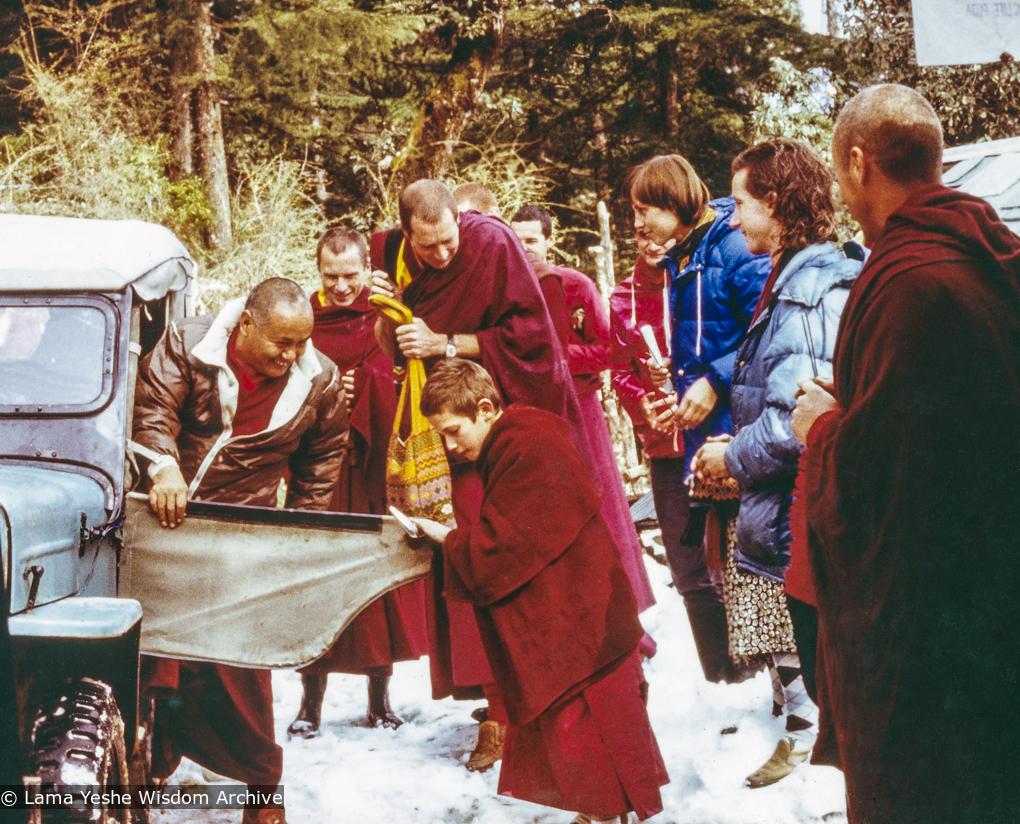
Lama Yeshe, left with Ven. Max Redlich (Thubten Gelek) back left, Ven. Thubten Gyatso, and Ven. Thubten Wangchuk, during the First Enlightenment Experience Celebration at Tushita Meditation Centre, Dharamsala, India, 1982. Photo courtesy LYWA.
Peter Kedge, a longtime FPMT student and former member of the FPMT Inc. Board of Directors, offered the following words when hearing of Ven. Gelek’s passing:
“Max was always so kind and helpful. I traveled with Lama and Rinpoche and organized their world teaching tours from 1976 to 1979. There was no money apart from that which centers sent in advance and some couldn’t manage that. We had to use cash and traveler’s cheques which made travel quite difficult. Max was a serial entrepreneur and ran a successful business in Melbourne.
“He asked how he could help with the tours and when I explained, he immediately arranged a Diners Club card which we could use and then reimburse Max when the bills were due. That was a huge help and one of many ways Max helped Lama and Rinpoche develop FPMT.
“He was always thinking of ways to make money for FPMT. When we were first trying to establish business in Hong Kong, Max opened an electronics store in Melbourne so we could ship electronic goods to him.
“Later after Lama Yeshe had passed, Rinpoche wanted to ask Osel some important question. Rinpoche asked Max to personally represent him and ask Osel. Rinpoche’s reason to ask Max was that Max had had a very pure relationship with Lama Yeshe and so was the right person to approach Osel on Rinpoche’s behalf.
“Max served and contributed in many often unseen and unsung ways.”
John Douthitt (Pelgye) recounts Ven. Gelek’s role in his taking ordination and some stories Ven. Gelek shared with him:
“In 1977 Max and I sat our first Kopan course together and quickly became friends. I arrived determined to be a monk, I would have taken robes the day I arrived had that been an option. Max spent the entire month coming up with one reason after another why I should NOT take ordination. I did take ordination after the course and then heard that someone had anonymously offered a generous yearly donation to cover my needs. I didn’t know anyone who had spare money except Max so I asked him and yes, it was him. I said, ‘But you’ve been trying to convince me to NOT take ordination.’ He told me he had wanted me to be sure it was what I really really wanted because it was too important of a decision to make without fully thinking it through.
He was, back then, wealthy. He’d figured out how to take the unwanted scraps of meat production and make them into something which WAS wanted. He told me stories about buying a Bentley solely on the basis that it was the only car he could find which was more expensive than a Rolls Royce and he had one of the 3-4 cellphones in the whole of Australia at the time in his Bentley; another of those cellphones in his other car.
He told me that he lived in a simple one bedroom apartment but, since he could, he figured he ought to buy a bluestone, one of the most expensive houses he could buy. After rattling about in that big house for a spell, he put in a ramp so he could drive his motorcycle up into the front room but eventually that lost its luster, too, and he realized that he was not occupying hardly any more space in the house than he had in the one bedroom apartment so he sold he house and moved back to a small apartment.
From longtime IMI sangha member, Wongmo,
“Max and I were quite close friends when we lived at Tushita Retreat Center, as it was known in those days…late 70’s-mid 80’s. He was an interesting character, having had an energetic youth and then Dharma practitioner. He’d tell me colorful stories of being in the family abattoir business in Australia.
“Max was known for his penchant to forever be searching for mystic, psychic observations. He’d carry around his I Ching book that was so well used that its pages were torn and dirty. Goodness only knows what questions he had for people he found for mos, predictions, and so on. He even traveled all the way to Land of Medicine Buddha in California to be near Pemo, to ask her for mirror readings.
“Our dear Max suffered from strong rlung (Tib.; Sanskrit: prana), and would often hold his hand to his heart area while speaking with you.
“He was so enthusiastic about the teachings, lamrim and so on, and well spoken, that I’d beg him to teach courses at Tushita but all he ever agreed to do was lead group discussions, which people so enjoyed. Then he served as director of Tushita for a couple of years.
“After Lama Yeshe’s passing, Rinpoche asked Max to oversee the building of Lama’s stupa at Tushita. Max did complete that project, but with great difficulty trying to organize the local Indian builders and so on. After that Max wanted to do some retreats but Rinpoche asked him to oversee the building of Gen Jampa Wangdu’s stupa.
“There was something about Max that made it just so interesting and nice to be around him.”
After hearing news of Ven. Max’s passing, Geshe Kelsang Wangmo put in prayer requests for Ven. Gelek at a number of monasteries in India, and Tushita Meditation Centre in Dharamsala requested prayers from His Holiness the Dalai Lama and many other high lamas. Its was reported that His Holiness made prayers holding a photo of Ven. Gelek at his heart. Chokyi Nyima Rinpoche offered prayers in front of relics of the Buddha while in Vietnam. Tushita also made generous offerings on Ven. Gelek’s behalf to the many meditators surrounding Trijang Rinpoche’s stupa in Dharamsala on Lama Tsongkhapa Day, December 8, 2023.
Ven. Gelek was cremated in Delhi, India on December 2, 2023. Kabir Saxena, spiritual program coordinator of Tushita Meditation Centre in Delhi and longtime friend of Ven. Gelek, asked Ajeer Vidya, who was born in the same village as the renowned Kunu Lama Rinpoche (who gave teachings to His Holiness the Dalai Lama on Shantideva’s famous text), to oversee the cremation and immersion of Ven. Gelek’s ashes in Delhi. Ajeer met Ven. Gelek some years ago and respected him. Following the cremation, Ven. Gelek’s ashes were immersed into the Yamuna River, which flows through Delhi and meets the Ganga,(Ganges), before the latter reaches Benares (Varanasi).
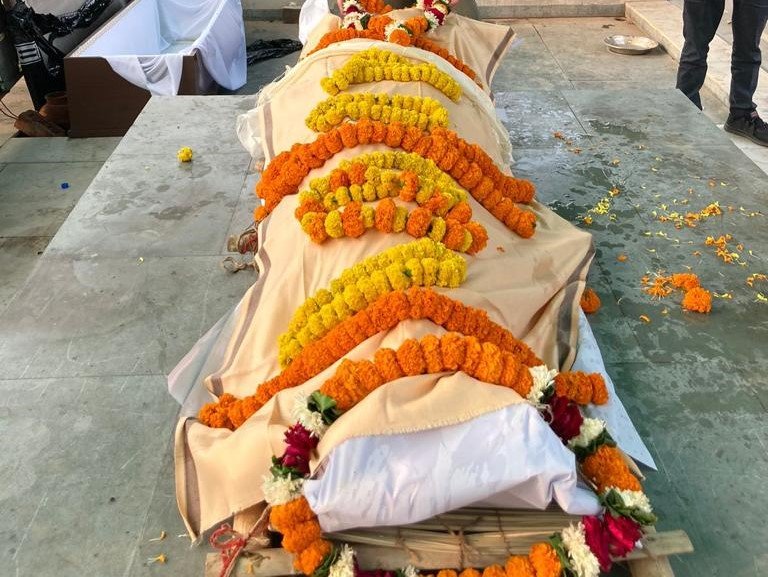
The body of Ven. Gelek being prepped for cremation.
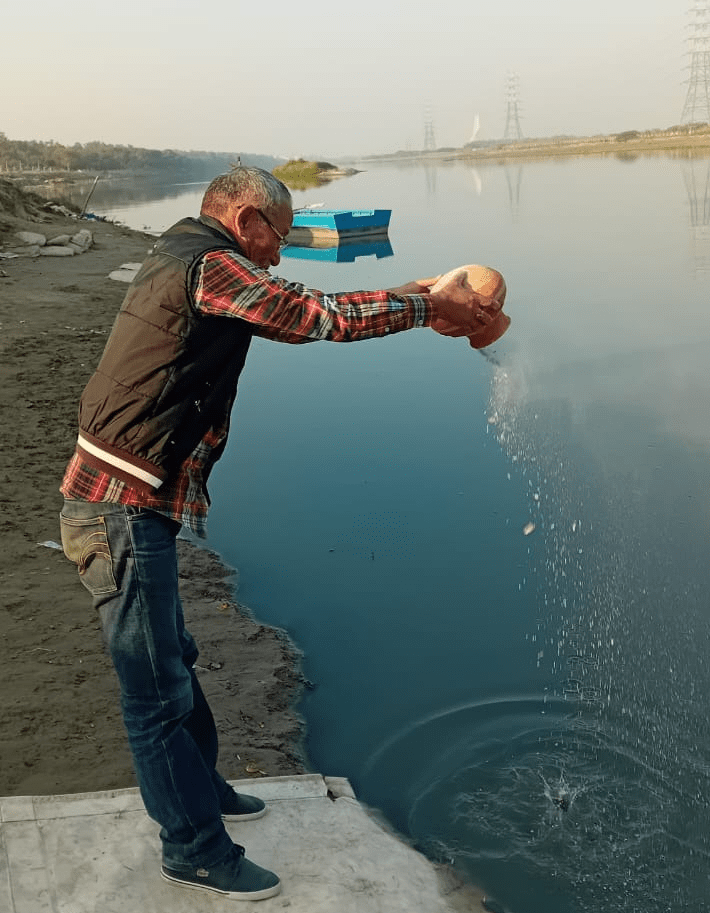
Ajeer Vidya immersing Ven. Gelek’s ashes into the Yamuna River, which flows through Delhi and meet the Ganga,(Ganges), before the latter reaches Benares (Varanasi).
Please pray that Ven. Gelek may never ever be reborn in the lower realms, may he be immediately born in a pure land where he can be enlightened or to receive a perfect human body, meet the Mahayana teachings and meet a perfectly qualified guru and by only pleasing the guru’s mind, achieve enlightenment as quickly as possible. More advice from Lama Zopa Rinpoche on death and dying is available, see Death and Dying: Practices and Resources (fpmt.org/death/).
To read more obituaries from the international FPMT mandala, and to find information on submission guidelines, please visit our new Obituaries page (fpmt.org/media/obituaries/).
- Tagged: obituaries, obituary
27
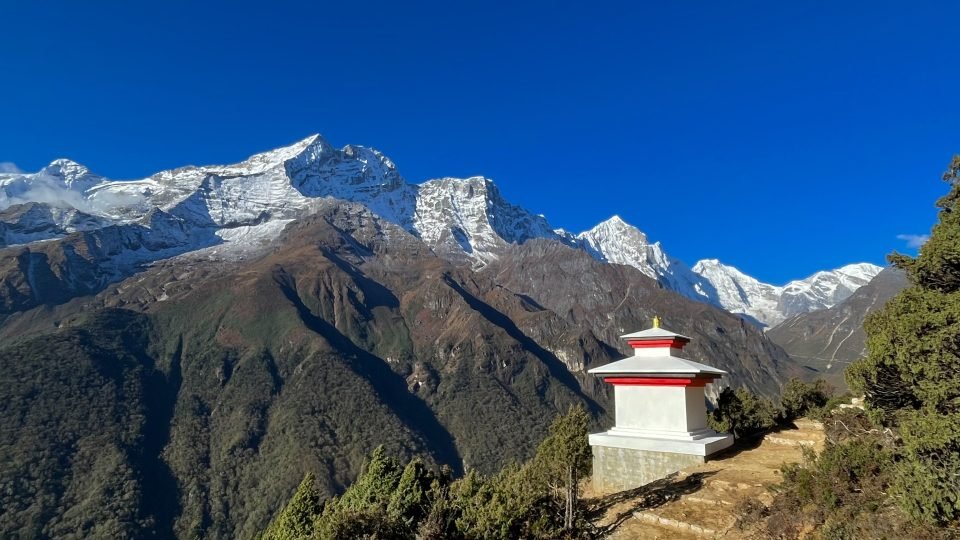
The Victory Stupa built for Lama Zopa Rinpoche at Lawudo. Photo by Ven. Tenzin Michael.
We are happy to share details of two auspicious group events happening in relation to Lama Zopa Rinpoche and Lawudo in early 2024.
The Lawudo Retreat Centre, situated high in the Himalayan mountains of eastern Nepal, holds particular significance for FPMT as this is the location of the cave where Lama Zopa Rinpoche, in his past life as the Lawudo Lama Kunsang Yeshe, spent the last 30 years of his life in intensive meditation retreat.
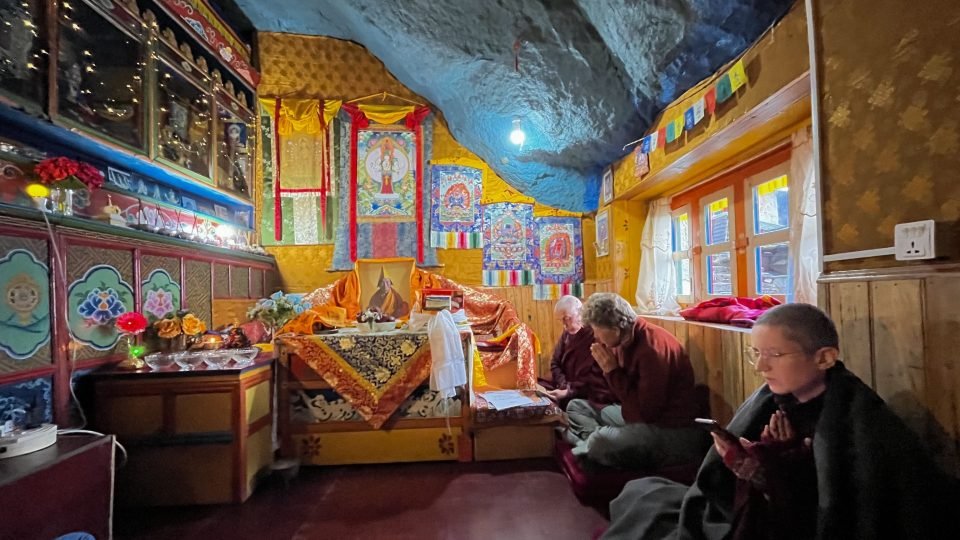
Retreatants in the Lawudo gompa. Photo by Ven. Tenzin Michael.
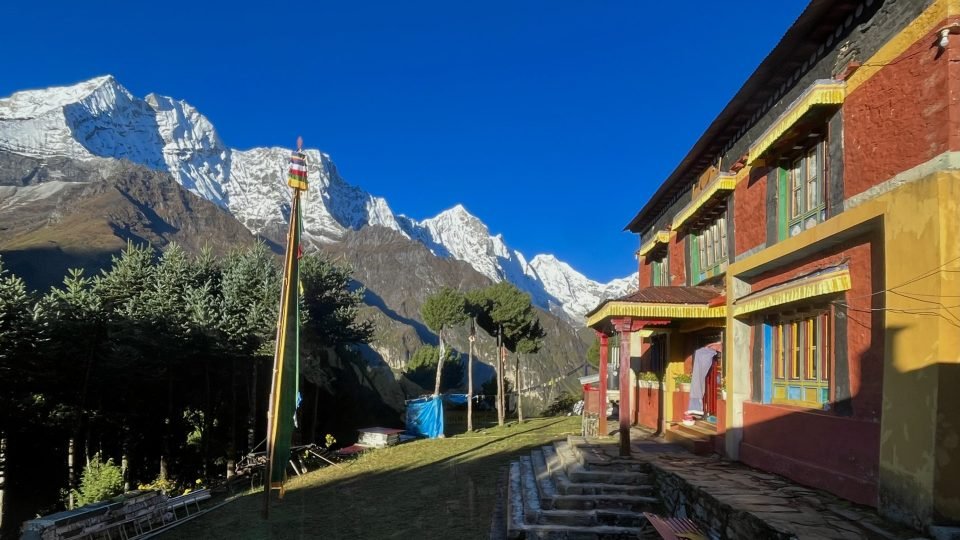
Lawudo Retreat Centre. Photo by Ven. Tenzin Michael.
Here we share information about two upcoming guided opportunities to visit Lawudo:
1. A pilgrimage for students of Lama Zopa Rinpoche honoring Rinpoche as the Lawudo Lama by visiting the main holy places of the area with prayers and practices for Rinpoche’s swift return following the anniversary puja and Heart Sutra Retreat at Kopan Monastery (April 25-May 9).
2. The Lawudo Trek, open to anyone with interest, occurring the month prior (March 18-April 1) which is a lamrim retreat and visit to Lawudo and also a fundraiser for the completion of one of Rinpoche’s wishes– a Guru Rinpoche Pure Land at Lawudo.
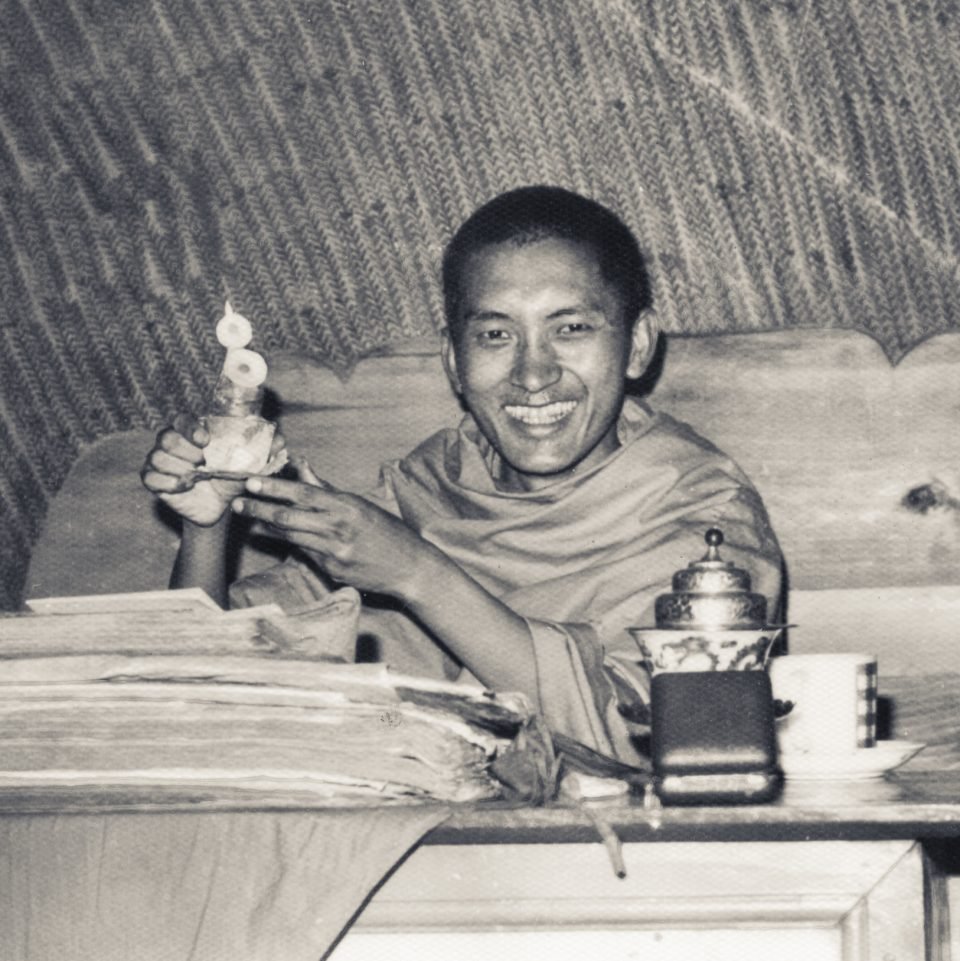
Lama Zopa Rinpoche in the cave of the Lawudo Lama, Lawudo, Nepal, 1970. Photo by Robbie Solick.
Lawudo Anniversary Pilgrimage April 25-May 9, 2024
By Ven. Sarah Thresher1, pilgrimage leader
The Khumbu region with its soaring mountains, clear skies, roaring rivers, waterfalls and ancient settlements is not just a place of breathtaking beauty, it was also blessed by Padmasambhava to nurture and support spiritual practice and realization. Generations of yogis have meditated in its caves and hermitages and the landscape is enriched by the presence of stupas, prayer stones, prayer wheels, prayer flags, holy images, temples and hermitages.
This is where our spiritual master Lama Zopa Rinpoche in his past life as the Lawudo Lama showed the aspect of accomplishing the highest stages of Dzogchen Atiyoga in the Lawudo cave and earth holes around it. It is also where Rinpoche took rebirth in the picturesque village of Thame and first became a monk at Thame monastery. Lawudo is where Rinpoche built his first monastery, ordained the first Kopan monks and where his sister still lives. In recent years, Rinpoche put much effort to help the local people by restoring the huge stupa of Thame-teng, constructing a 100 trillion prayer wheel in Thame, and sponsoring the reconstruction of temples, prayer wheels, artwork and more in the surrounding areas.
Pilgrimage is always uplifting—but to visit and practice in the holy places of one’s own teacher is especially powerful and moving. This anniversary pilgrimage to the Khumbu region—and particularly Lawudo and Thame—is therefore especially poignant on the anniversary of Lama Zopa Rinpoche’s passing.
The Lawudo Anniversary Pilgrimage is an opportunity for students of Lama Zopa Rinpoche to visit and connect (or reconnect) with the holy places of Rinpoche’s past and most recent life as the Lawudo Lama. During these fifteen days of pilgrimage we will be doing prayers and practices taught by Rinpoche and specifically focused on clearing obstacles and creating auspicious conditions for his swift return. There will also be time to reflect and contemplate in these inspiring places. For the three days of retreat at Lawudo—at least—we will also be joined by Charok Lama Rinpoche2 for Dharma discussion and sharing.
Ven Sarah will be helping to introduce the pilgrimage places and lead the prayers and practices.
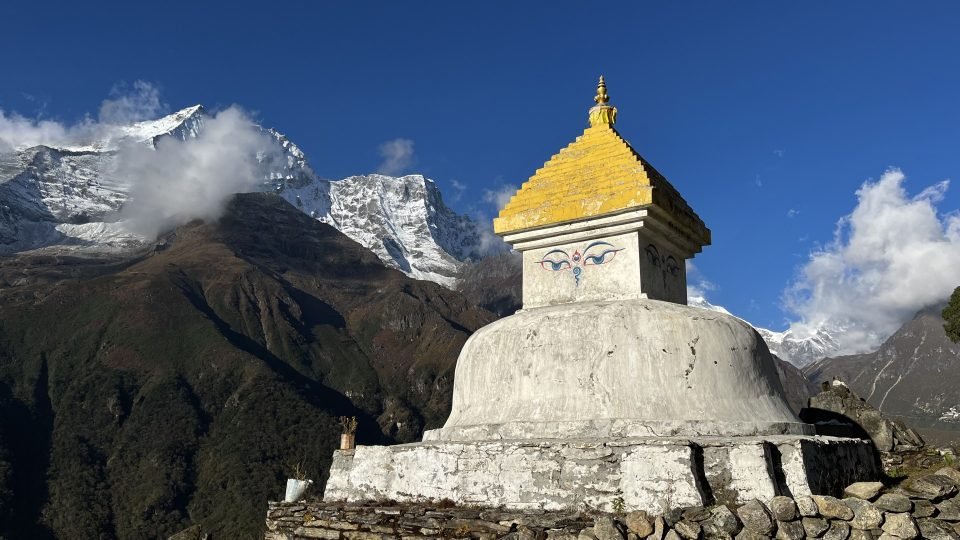
Stupa at Mende below Lawudo. Kongde mountain (behind) faces Lawudo.. Photo by Ven. Tenzin Michael.
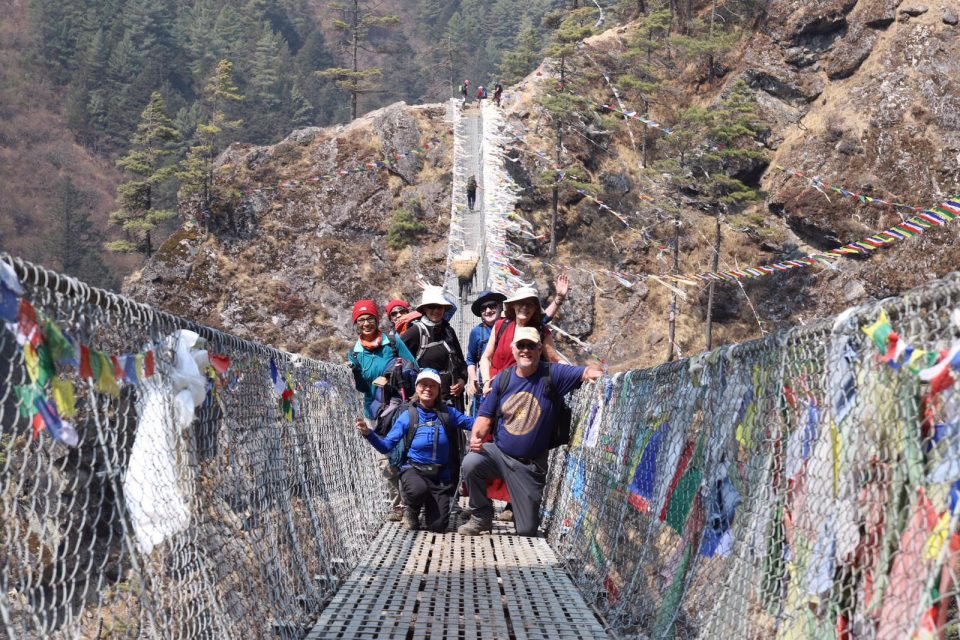
Group of 2019 Lawudo Trekkers on the last suspension bridge (Hilary bridge) before the climb up to Namche. Photo Harald Weichhart.
Lawudo Trek with Ven. Tenzin Gendun, March 18-April 1, 2024
By Kristina Mah, trek organizer
We are so excited that Nalanda Monastery monk, Venerable Tenzin Gendun3 will lead the fifth Lawudo Trek! Ven. Gendun will lead pilgrims and enthusiasts from Kopan Monastery to Lawudo Gompa & Retreat Center.
The trek raises money for Lama Zopa Rinpoche’s vision to build a Guru Rinpoche Pure Land at Lawudo and also to contribute to the maintenance and quality of life for those who care for Lawudo.
All the merits manifested through the 2024 Lawudo Trek are dedicated for the swift rebirth of Lama Zopa Rinpoche, as quickly as possible, in a place where he can be very quickly recognized and be of most benefit to sentient beings, and to fulfil Rinpoche’s wishes to create a Guru Rinpoche Pure Land at Lawudo.
A full report of last year’s trek is available.
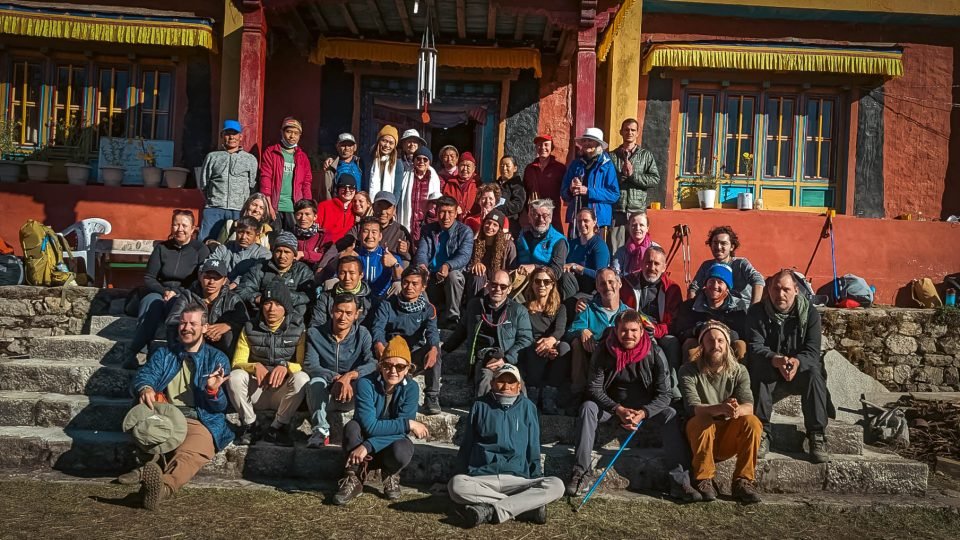
2022 Lawudo trekking group with Lawudo staff, guides, and porters in front of Lawudo Gompa. Center, Ven. Robina and Lama Zopa Rinpoche’s
sister Ani Ngawang Samten. Photo courtesy of Kristina Mah.
If you are interested in joining the Lawudo Anniversary Pilgrimage (April 25-May 9), please write to Ven. Khadro at Kopan Monastery (spc@kopanmonastery.org) for a full itinerary and an additional information sheet. Some additional information can also be found on the Kopan website, at the bottom of the information about the Heart Sutra Retreat.
For more information and to book your spot for the Lawudo Trek (March 18-April 1), please visit the Lawudo Trek website.
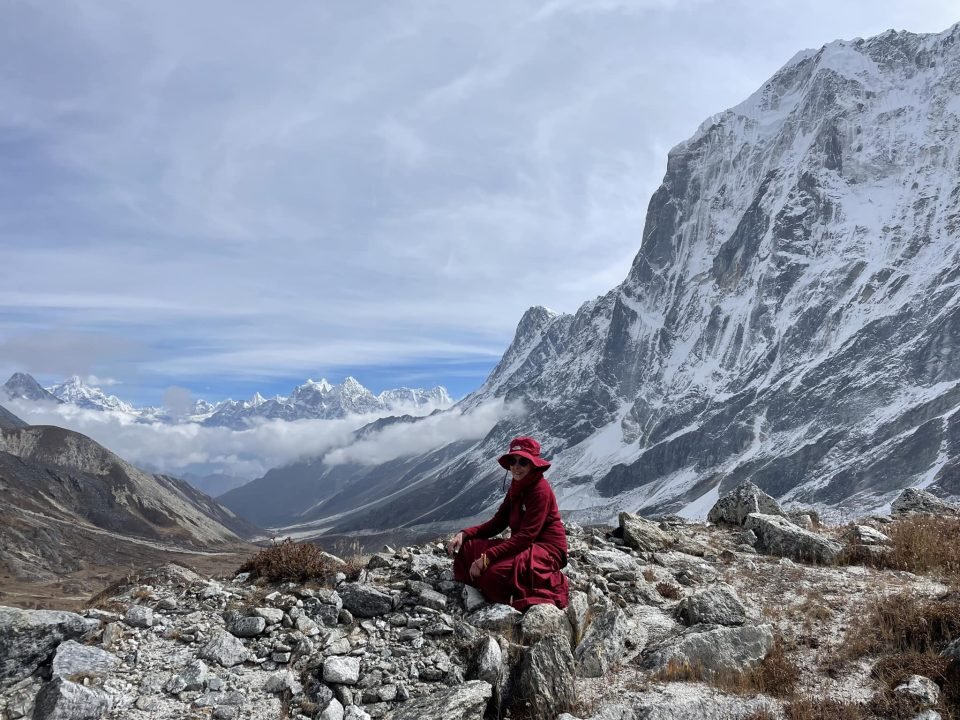
Ven Sarah Thresher trekking to a special oracle lake blessed by Guru Rinpoche above Thame Valley.
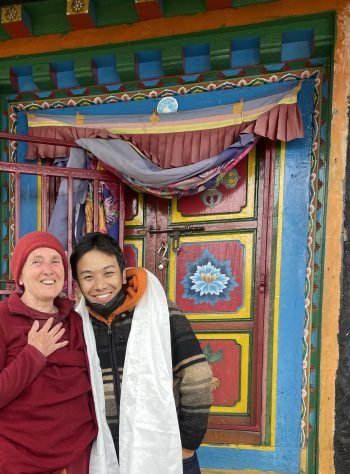
Ven. Sarah Thresher and Charok Lama outside the Lawudo Gompa, July 2023.
1Ven .Sarah Thresher met Buddhism in 1982 at Kopan and almost immediately began working for Wisdom Publications editing and preparing Dharma materials. In 1986, after ordaining in Bodhgaya with His Holiness Dalai Lama she made her first trip to Lawudo. She has travelled and taught around the world, but her special focus is preserving and spreading the teachings, practice and chanting lineage of Lama Zopa Rinpoche. In 2023 she spent four months in retreat and pilgrimage at and around Lawudo and looks forward to sharing the magic of Khumbu with others.
2Charok Lama was recognized at the age of three as the reincarnation of the revered hermit- yogi Kusho Mangde who was a friend of the first Lawudo Lama and meditated in the Charok Cave nearby.
As a young child he demanded to go to Kopan monastery to study as a monk and from there he attended Sera Monastery, where he excelled in debate and philosophical inquiry. Charok Lama’s early travel and exposure to Eastern and Western culture has given him a special insight into the challenges faced integrating Tibetan Buddhism to other cultures. He is a gifted and joyful Dharma teacher, public speaker and motivational coach.
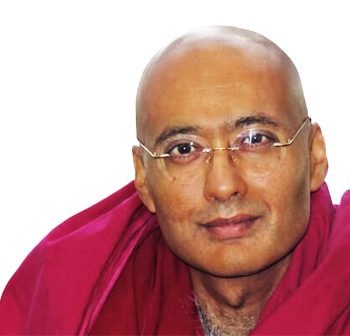
Ven. Tenzin Gendun.
3Born in Sri Lanka and growing up in England, Ven. Tenzin Gendun studied at art school and finished a degree in illustration. After completing his tertiary studies, he traveled to India and met Tibetan Buddhism in 1991 through the kindness of Lama Zopa Rinpoche and His Holiness the Dalai Lama. He was ordained in 1992, and then worked in FPMT centers in New Zealand.
Ven. Gendun moved to Nalanda Monastery in France in 2000 to deepen his studies. Since then, he has completed the FPMT Basic Program and Masters Program.
After finishing retreat, Ven. Gendun returned to teaching and leading retreats at Nalanda Monastery and in FPMT centers in Europe and around the world.
Foundation for the Preservation of Mahayana Tradition (FPMT), is a Tibetan Buddhist organization dedicated to the transmission of the Mahayana Buddhist tradition and values worldwide through teaching, meditation and community service.
- Tagged: lawudo, lawudo pilgrimage, lawudo trek
19
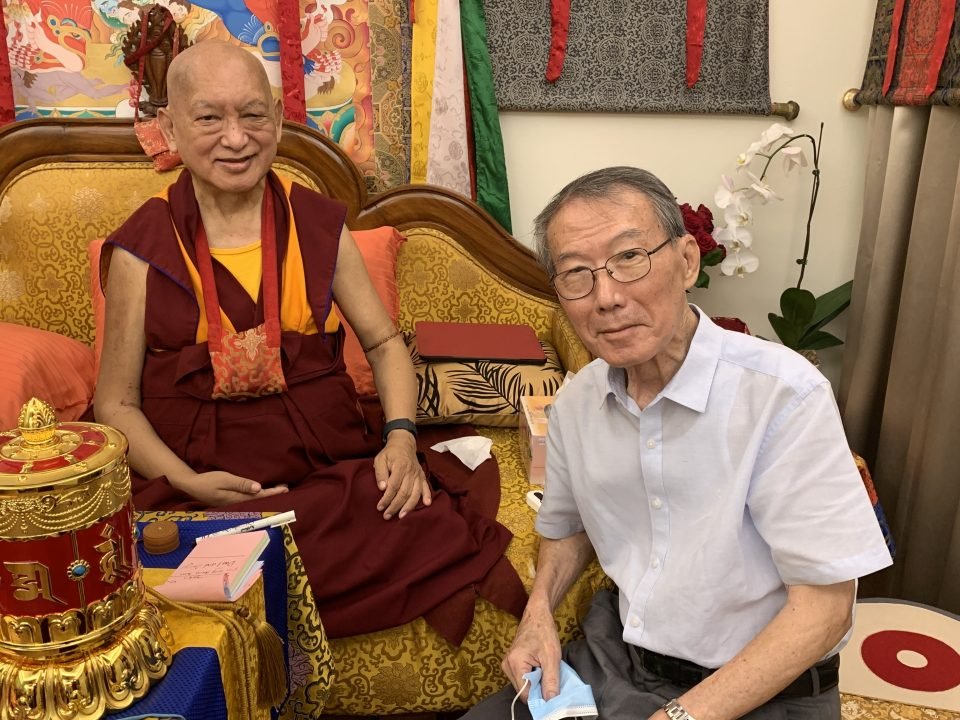
Lama Zopa Rinpoche with Sim Hong Boon, August 2022. Photo by Ven. Holly Ansett.
Sim Hong Boon passed away of cancer on August 13, 2023 at age 76 in Singapore.
Sim Hong Boon was a longtime member of the FPMT Inc. Board of Directors and helped the Maitreya Project.
He was an ardent supporter of Amitabha Buddhist Centre in Singapore, since its founding in 1989. ABC Director, Hup Cheng, shares some details about Mr. Sim’s contributions.
Sim Hong Boon has contributed substantially to the growth of the Amitabha Buddhist Centre. He was appointed by Kyabje Lama Zopa Rinpoche to oversee the construction of the new building at 44 Lorong 25A, Geylang. Mr. Sim, an architect by profession, drew up the plans for the new building, submitted to the authorities for approval, and put it out to tender for the construction. He did this all by himself, to save costs, and he even waived his professional fees. We are deeply deeply grateful to Mr. Sim for this monumental task of completing the new building for ABC.
Mr. Sim was appointed by Rinpoche to be a trustee of ABC’s Board of Trustees, in 2005. The trustees are appointed to hold the fixed assets of the center.
In 2018, when the ABC childcare center needed to be expanded, he again offered his services to build an additional wing so we could accommodate more pre school children.
Mr. Sim has been a pillar of strength behind ABC’s growth in the last 35 years. His contribution has been outstanding. We would not have come this far without the enormous effort put in over the years. We will miss Mr. Sim’s presence, but he has left behind an enduring legacy, that will benefit many future generations.
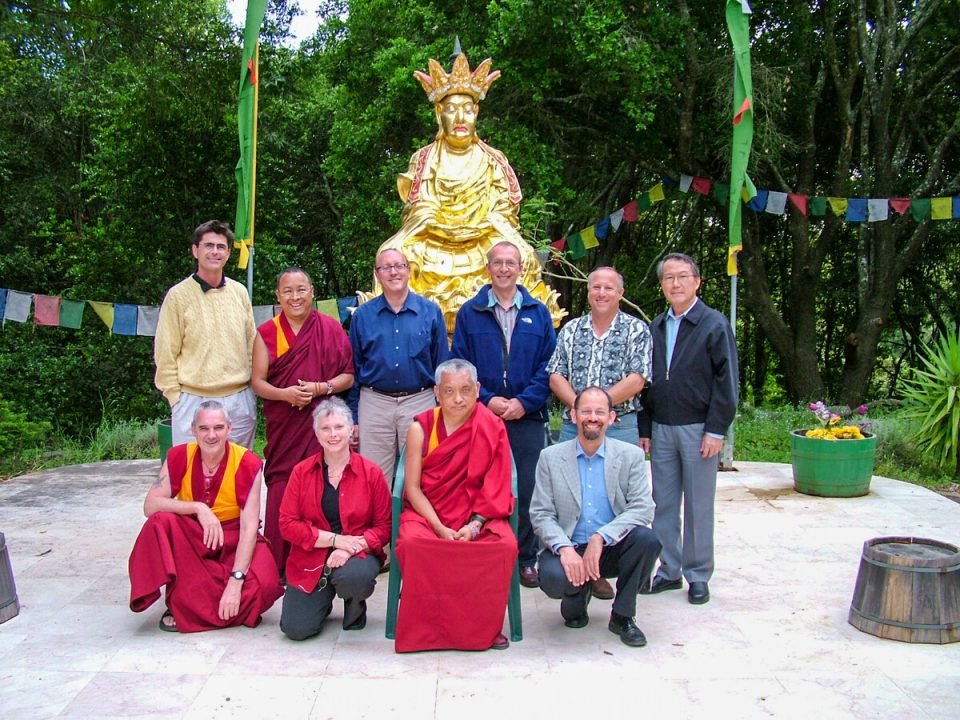
FPMT Board of Directors Meeting, Land of Medicine Buddha, California, USA, May 17, 2004. Photo by Ven. Roger Kunsang. Sim Hong Boon is top row, far right.
Please pray that Sim Hong Boon may never ever be reborn in the lower realms, may he be immediately born in a pure land where he can be enlightened or to receive a perfect human body, meet the Mahayana teachings and meet a perfectly qualified guru and by only pleasing the guru’s mind, achieve enlightenment as quickly as possible. More advice from Lama Zopa Rinpoche on death and dying is available, see Death and Dying: Practices and Resources (fpmt.org/death/).
To read more obituaries from the international FPMT mandala, and to find information on submission guidelines, please visit our new Obituaries page (fpmt.org/media/obituaries/).
- Tagged: obituaries, obituary
- Home
- News/Media
- Study & Practice
- About FPMT Education Services
- Latest News
- Programs
- New to Buddhism?
- Buddhist Mind Science: Activating Your Potential
- Heart Advice for Death and Dying
- Discovering Buddhism
- Living in the Path
- Exploring Buddhism
- FPMT Basic Program
- FPMT Masters Program
- FPMT In-Depth Meditation Training
- Maitripa College
- Lotsawa Rinchen Zangpo Translator Program
- Universal Education for Compassion & Wisdom
- Online Learning Center
- Prayers & Practice Materials
- Overview of Prayers & Practices
- Full Catalogue of Prayers & Practice Materials
- Explore Popular Topics
- Benefiting Animals
- Chenrezig Resources
- Death & Dying Resources
- Lama Chopa (Guru Puja)
- Lama Zopa Rinpoche: Compendium of Precious Instructions
- Lama Zopa Rinpoche: Life Practice Advice
- Lama Zopa Rinpoche Practice Series
- Lamrim Resources
- Mantras
- Prayer Book Updates
- Purification Practices
- Sutras
- Thought Transformation (Lojong)
- Audio Materials
- Dharma Dates – Tibetan Calendar
- Translation Services
- Publishing Services
- Teachings and Advice
- Find Teachings and Advice
- Lama Zopa Rinpoche Advice Page
- Lama Zopa Rinpoche: Compendium of Precious Instructions
- Lama Zopa Rinpoche Video Teachings
- ༧སྐྱབས་རྗེ་བཟོད་པ་རིན་པོ་ཆེ་མཆོག་ནས་སྩལ་བའི་བཀའ་སློབ་བརྙན་འཕྲིན།
- Podcasts
- Lama Yeshe Wisdom Archive
- Buddhism FAQ
- Dharma for Young People
- Resources on Holy Objects
- Ways to Offer Support
- Centers
- Affiliates Area
- Teachers
- Projects
- Charitable Projects
- Make a Donation
- Applying for Grants
- News about Projects
- Other Projects within FPMT
- Support International Office
- Projects Photo Galleries
- Give Where Most Needed
- FPMT
- Shop
Translate*
*powered by Google TranslateTranslation of pages on fpmt.org is performed by Google Translate, a third party service which FPMT has no control over. The service provides automated computer translations that are only an approximation of the websites' original content. The translations should not be considered exact and only used as a rough guide.We are not compelled to meditate by some outside agent, by other people, or by God. Rather, just as we are responsible for our own suffering, so are we solely responsible for our own cure. We have created the situation in which we find ourselves, and it is up to us to create the circumstances for our release. Therefore, as suffering permeates our life, we have to do something in addition to our regular daily routine. This “something” is spiritual practice or, in other words, meditation.
The Purpose of Meditation
Lama Yeshe Wisdom Archive
